KS1 and KS2 Number Lines Worksheets
Number lines are essential tools in building a strong foundation in maths; by representing numbers in a linear, spatial way, number lines help learners grasp number order, value, and relationships in a way that's both accessible and engaging.
Number lines support students in visualising and performing calculations, understanding rounding and bounds, working with decimals and fractions. This visual clarity aids in maths mastery, as students move through concepts with confidence and comprehension.
At Cazoom, we offer a broad collection of worksheets that utilise number lines in a variety of ways. Our KS1 and 2 resources cover ordering and comparing integers, fractions and decimals, beginning with addition and subtraction, rounding, extending to comparing and ordering negative numbers and beginning to calculate across zero. All resources are designed to support progressive learning. With new worksheets being regularly added, there's always something fresh to enhance your students' understanding and keep them engaged.
Addition with Number Lines (up to 10)
Year groups: 1
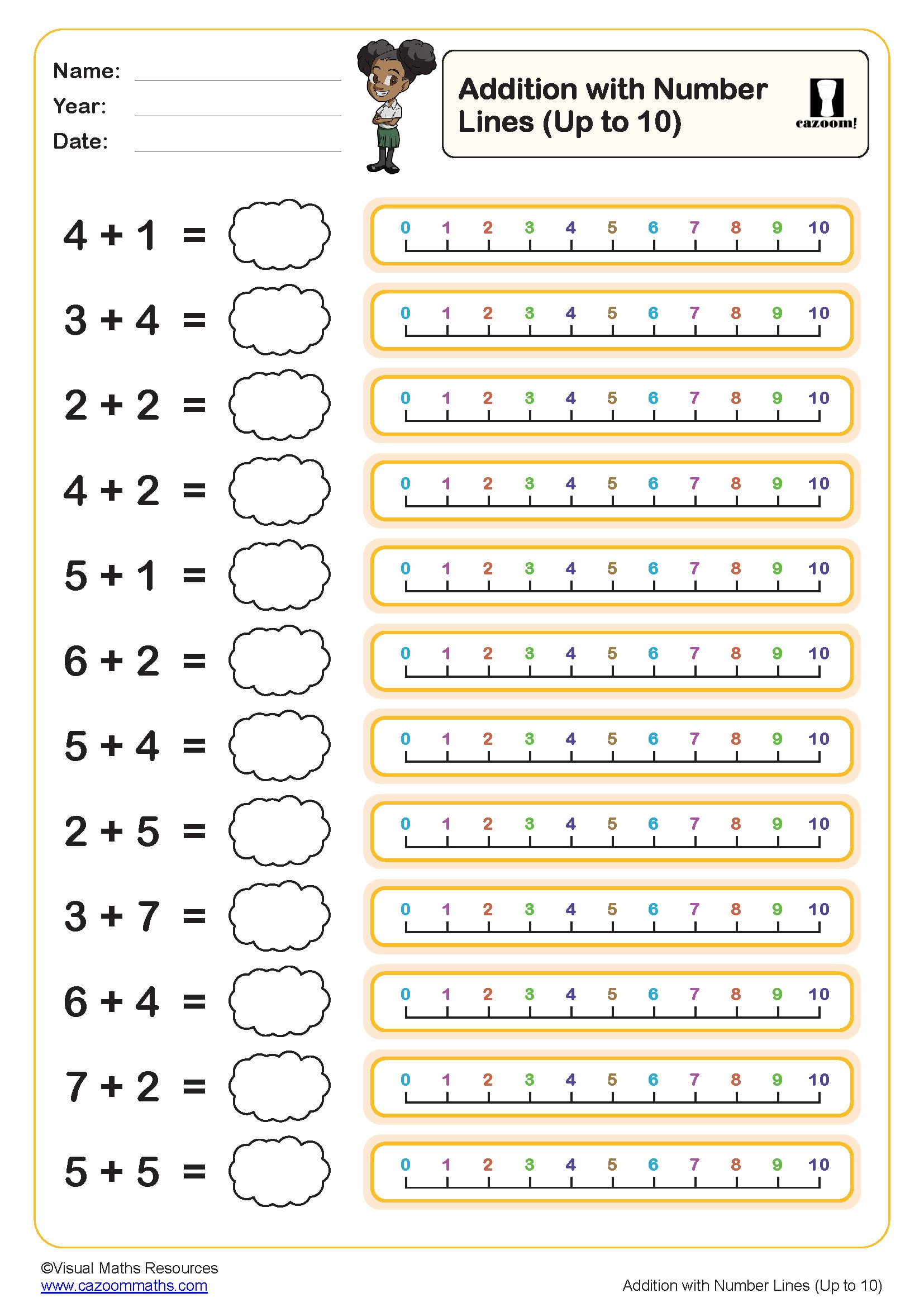
Addition with Number Lines (up to 18)
Year groups: 1
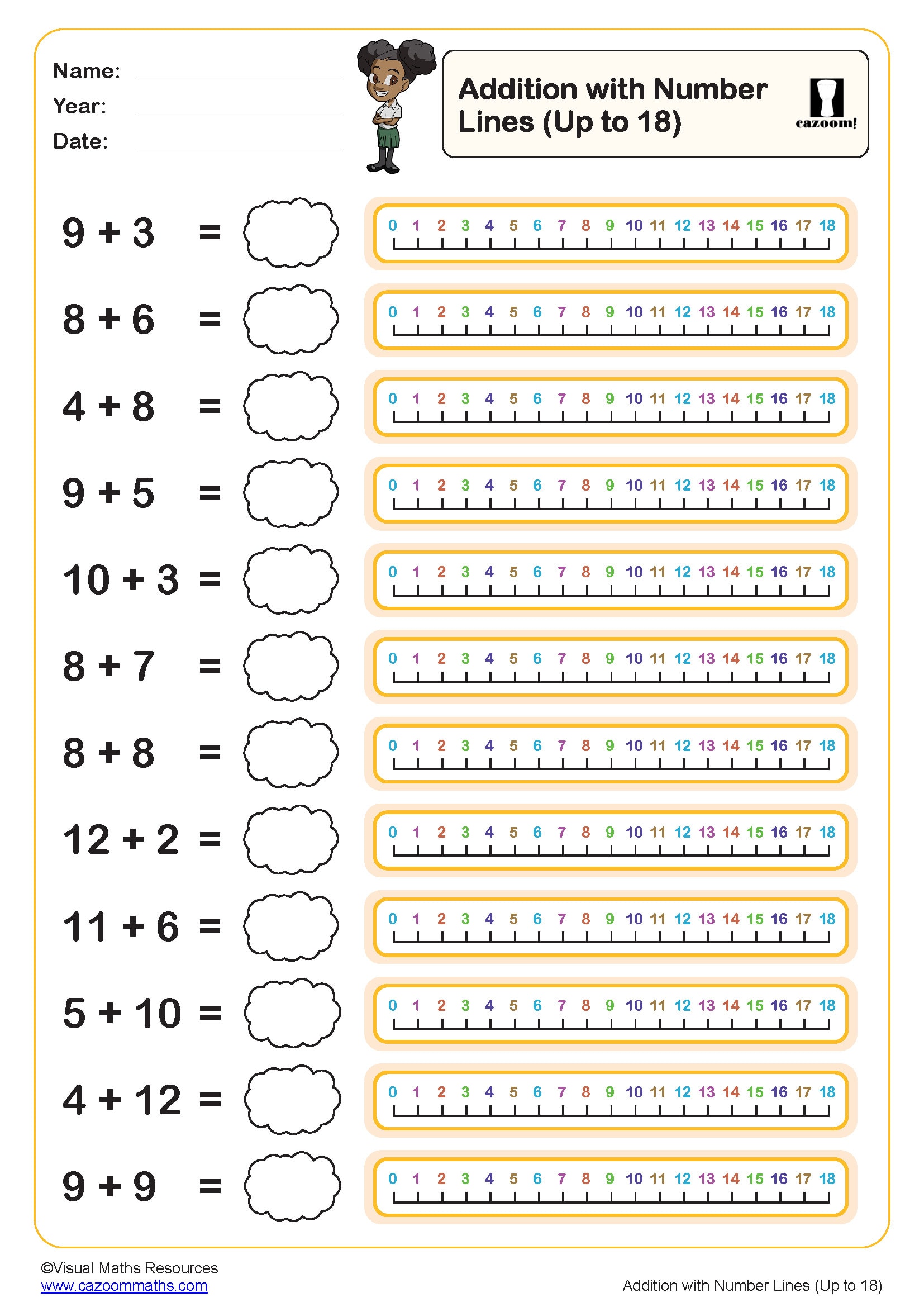
Addition with Number Lines (up to 5)
Year groups: 1
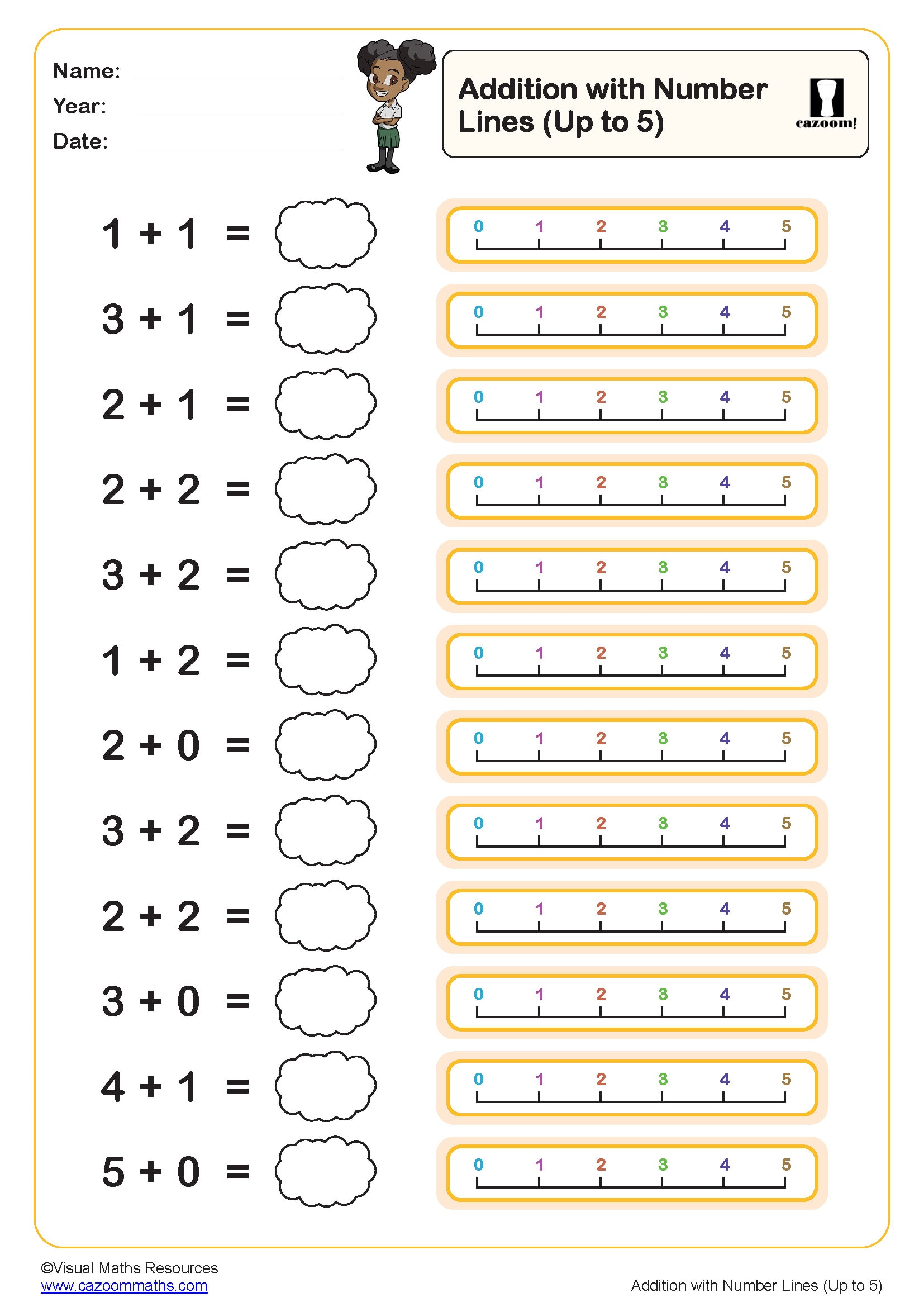
Numerals and Words (up to 10)
Year groups: 1
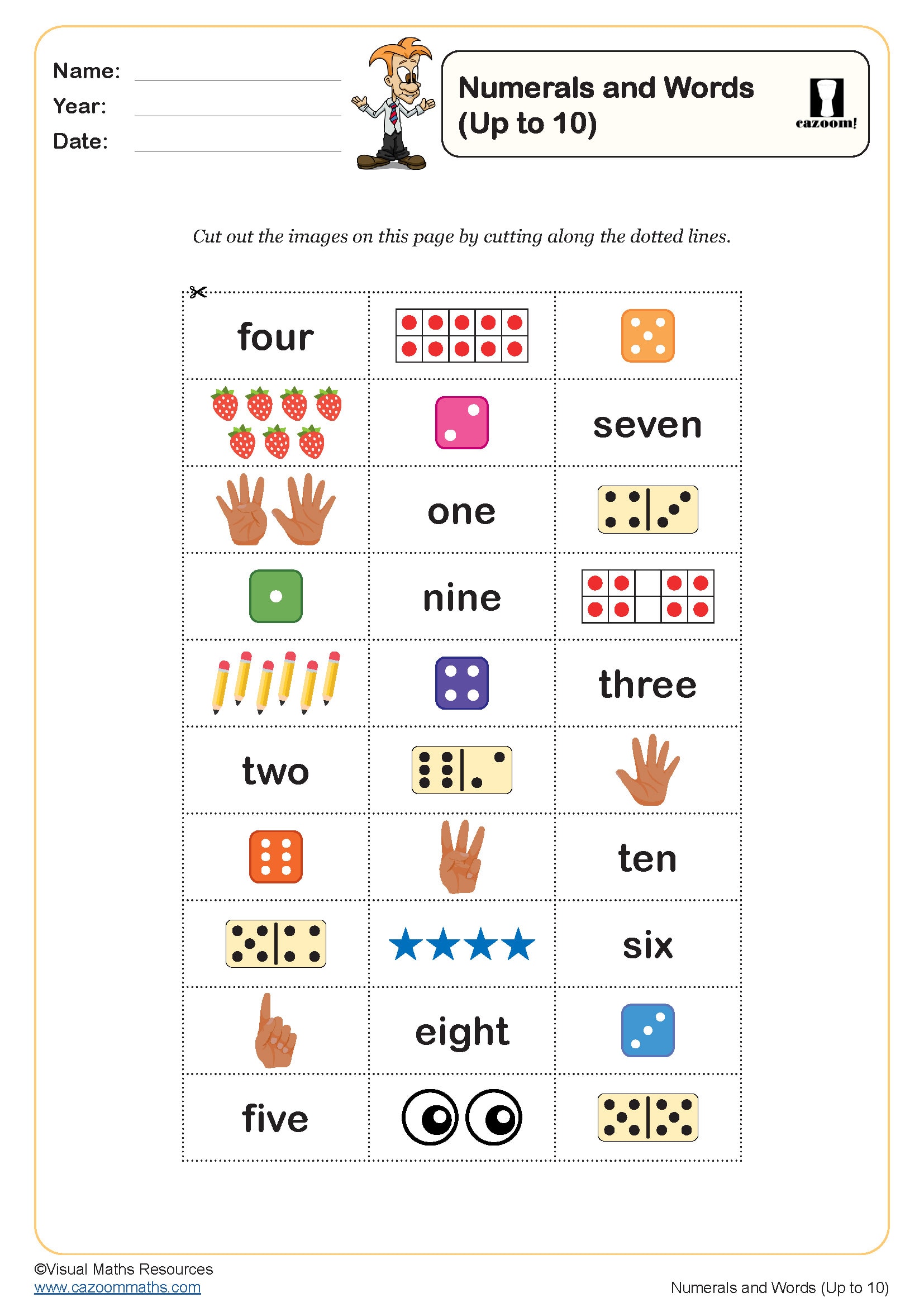
Subtraction Using Number Lines (Subtracting Single Digits from Numbers up to 20)
Year groups: 1
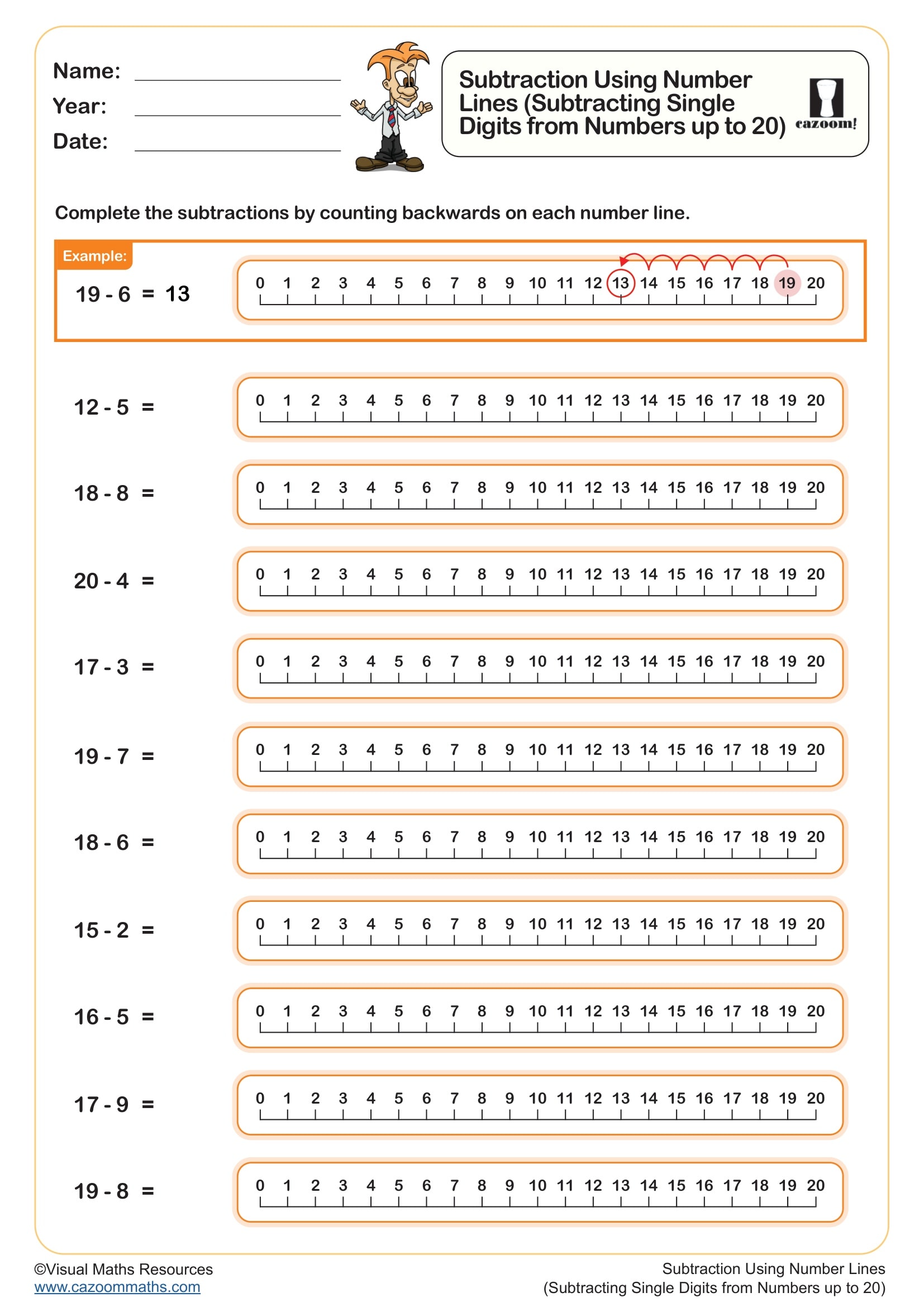
Subtraction Using Number Lines (Up to 10)
Year groups: 1
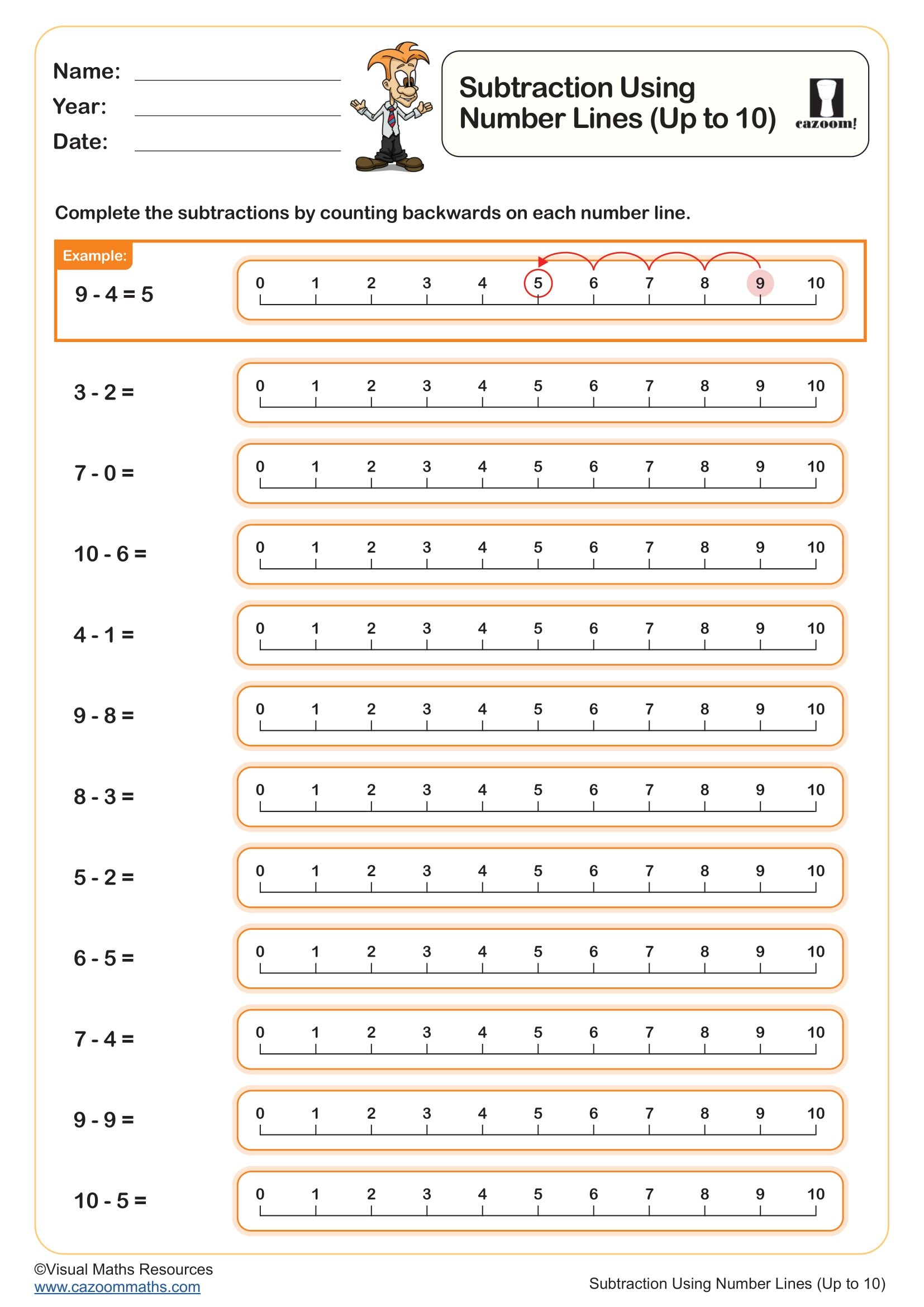
The Number Line (to 10)
Year groups: 1
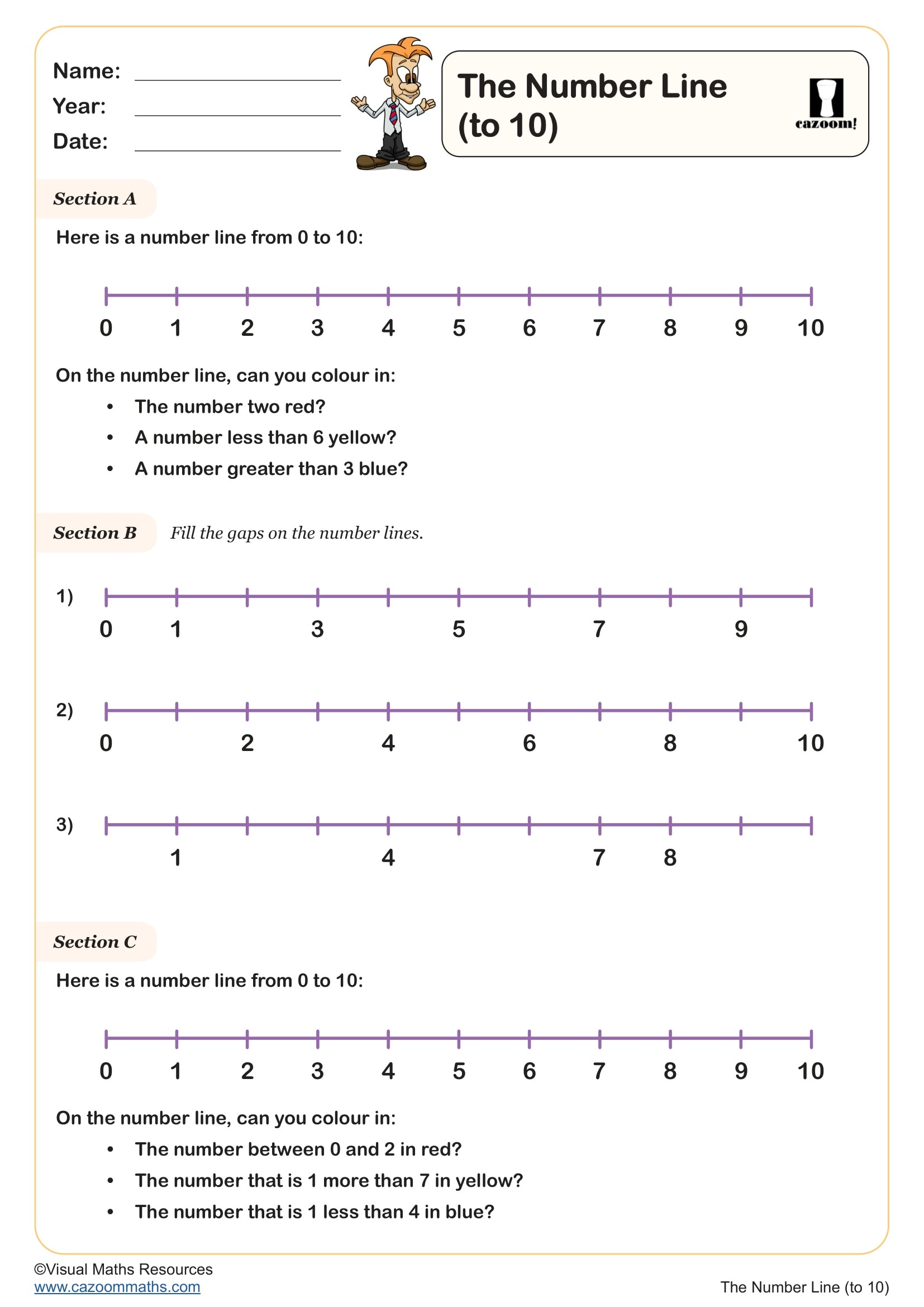
The Number Line (to 100)
Year groups: 1, 2
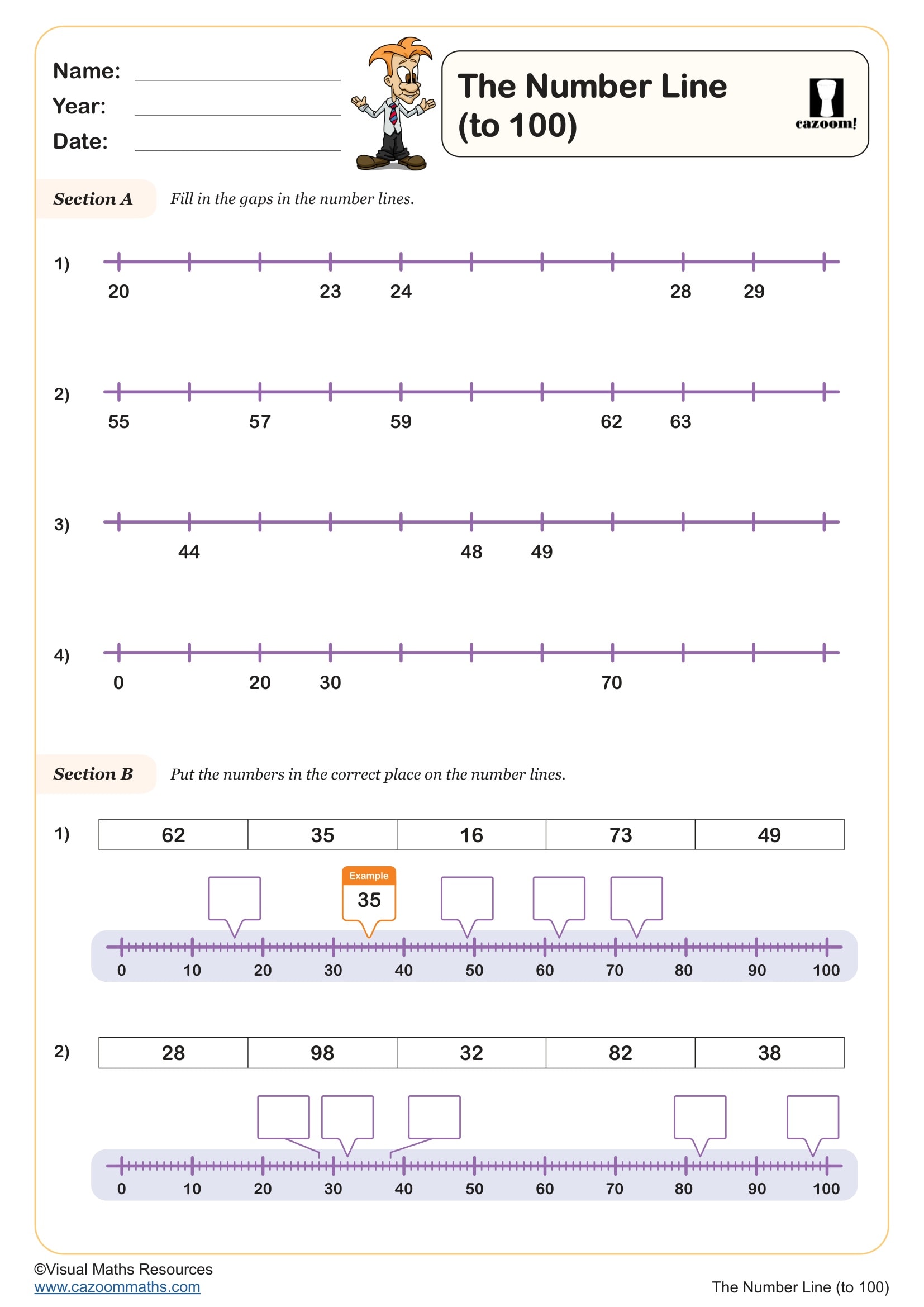
The Number Line (to 20)
Year groups: 1
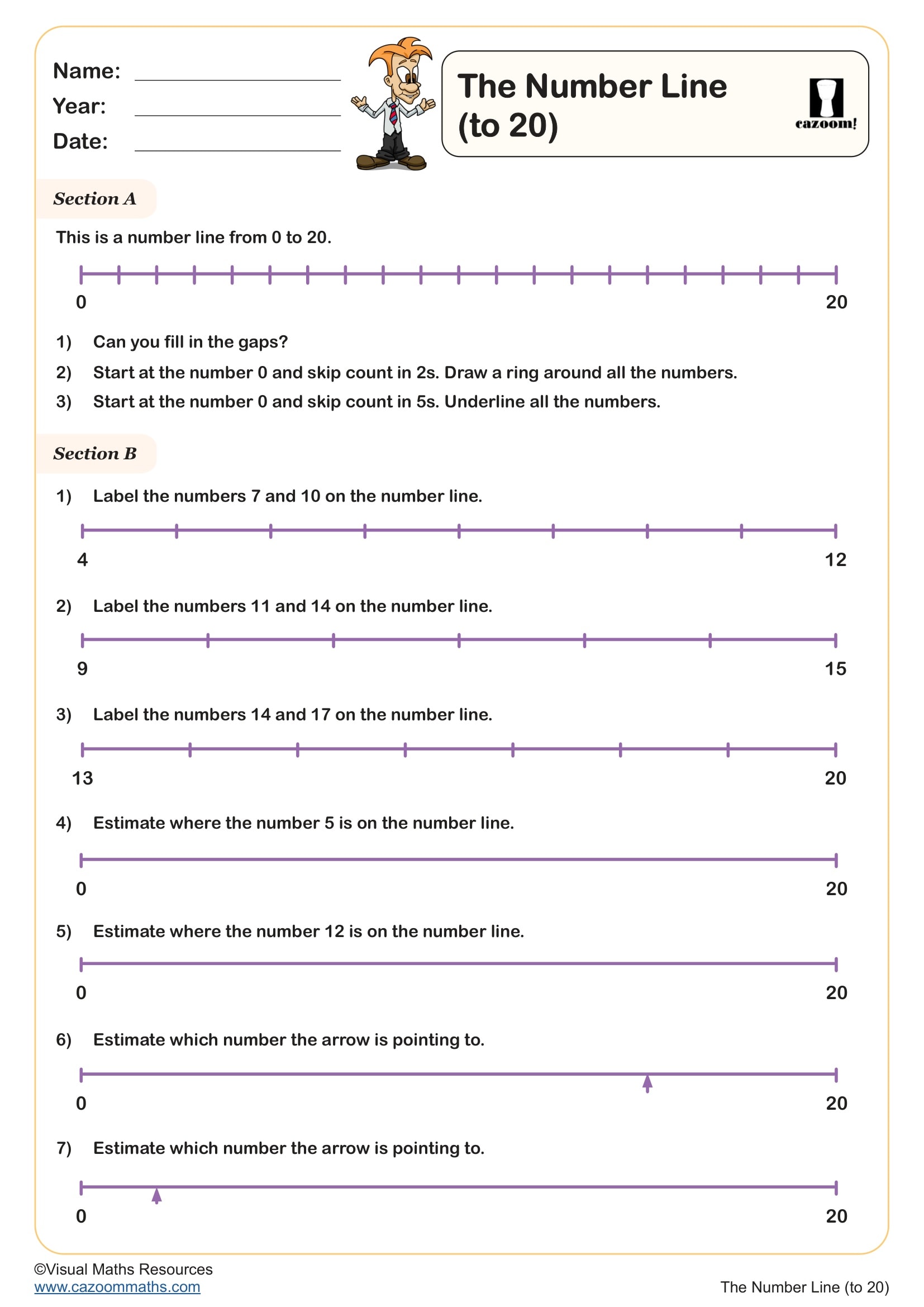
Compare and Order Numbers to 100
Year groups: 2
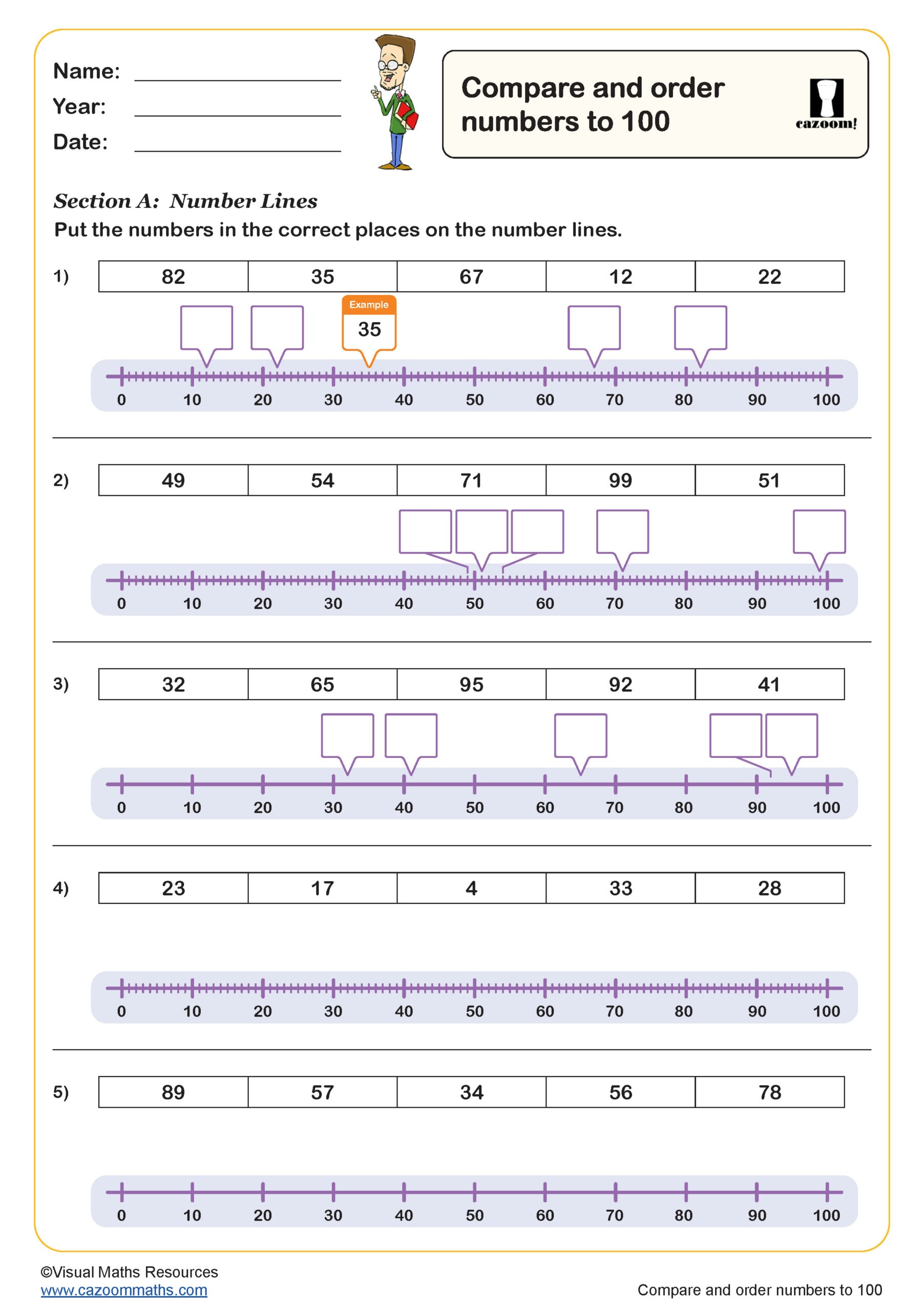
Counting in Halves
Year groups: 2
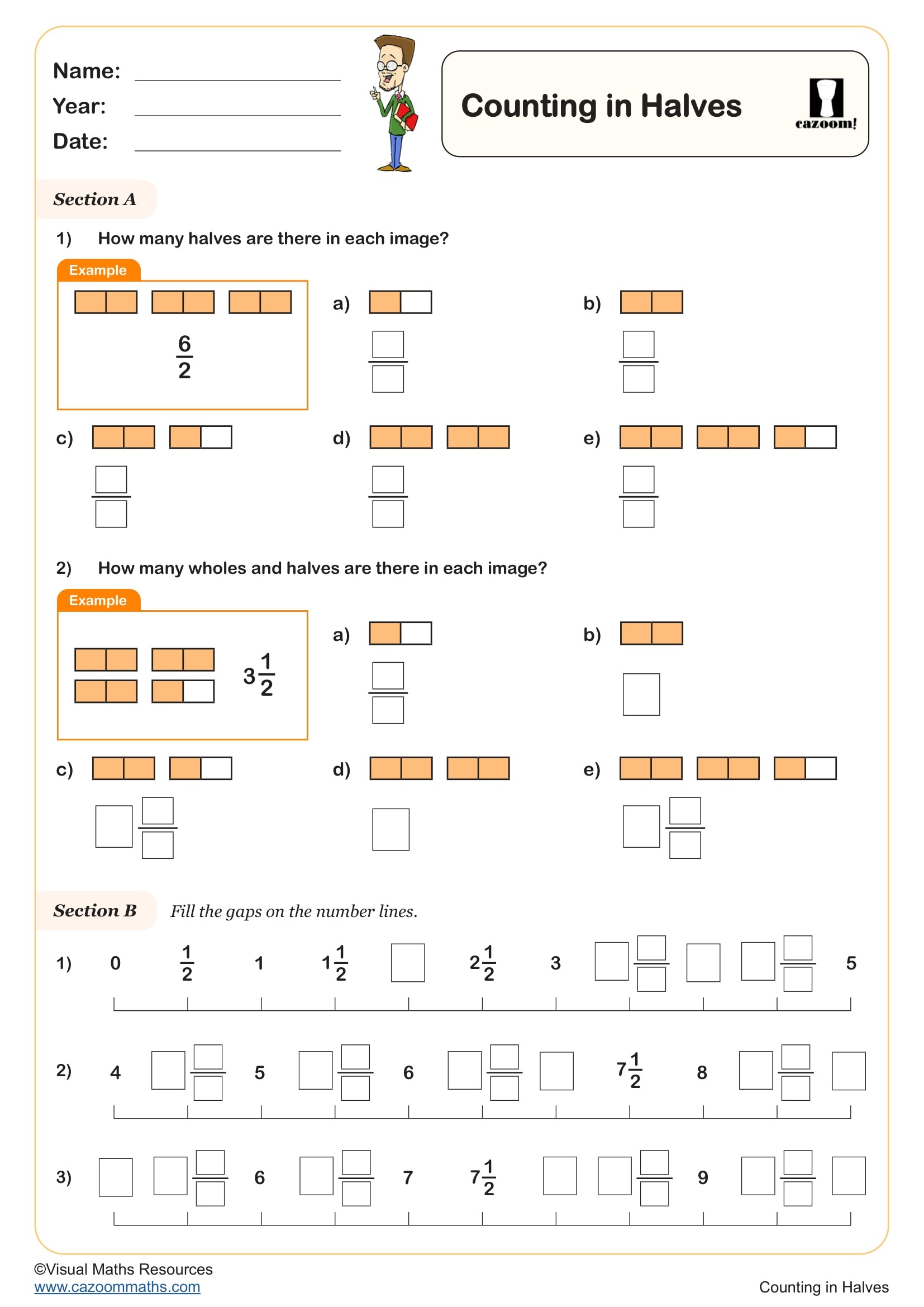
Counting in Quarters
Year groups: 2
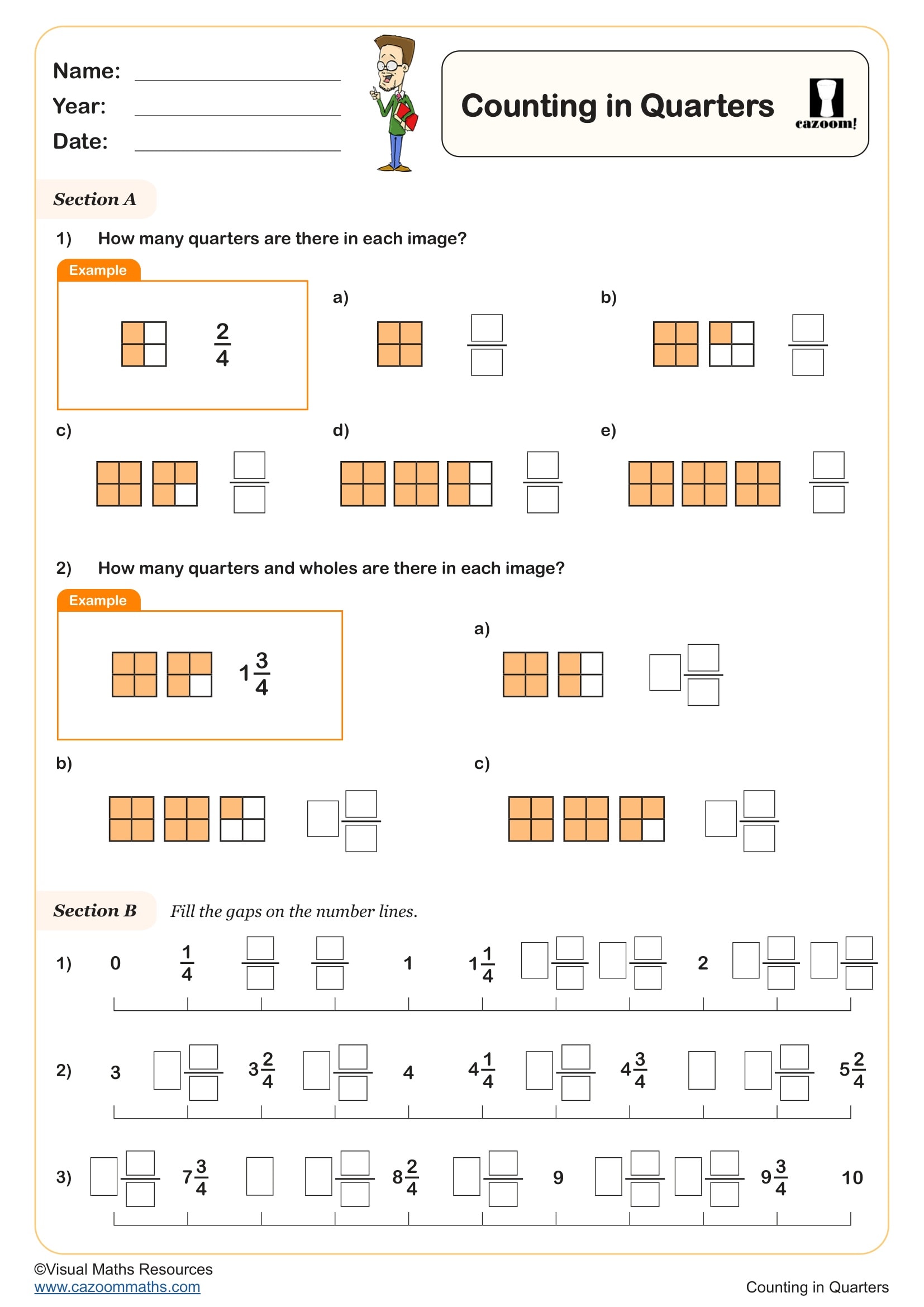
Doubling Numbers to 20 - Addition
Year groups: 2, 3
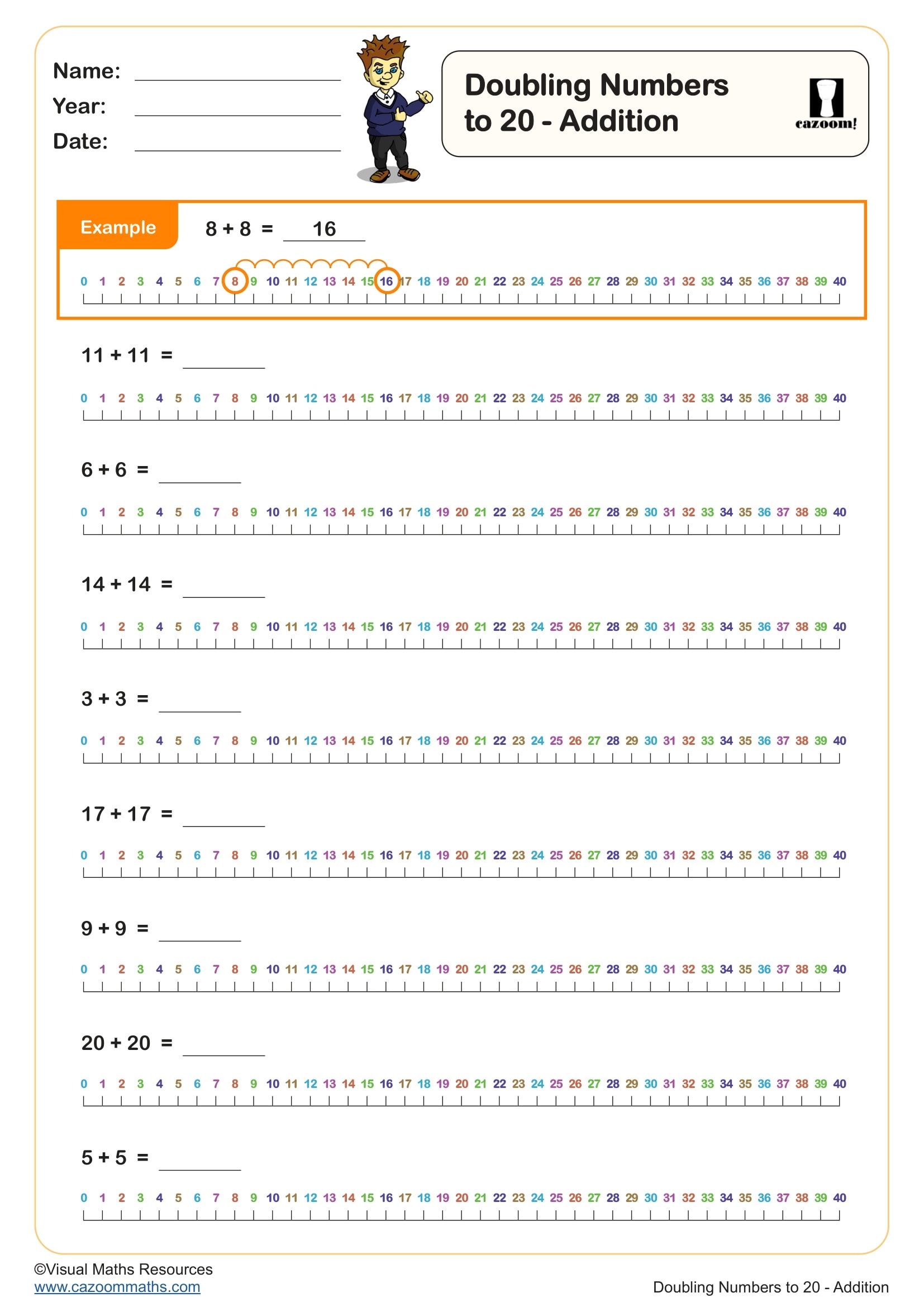
Misisng Gaps (A) (With a Number Line)
Year groups: 2
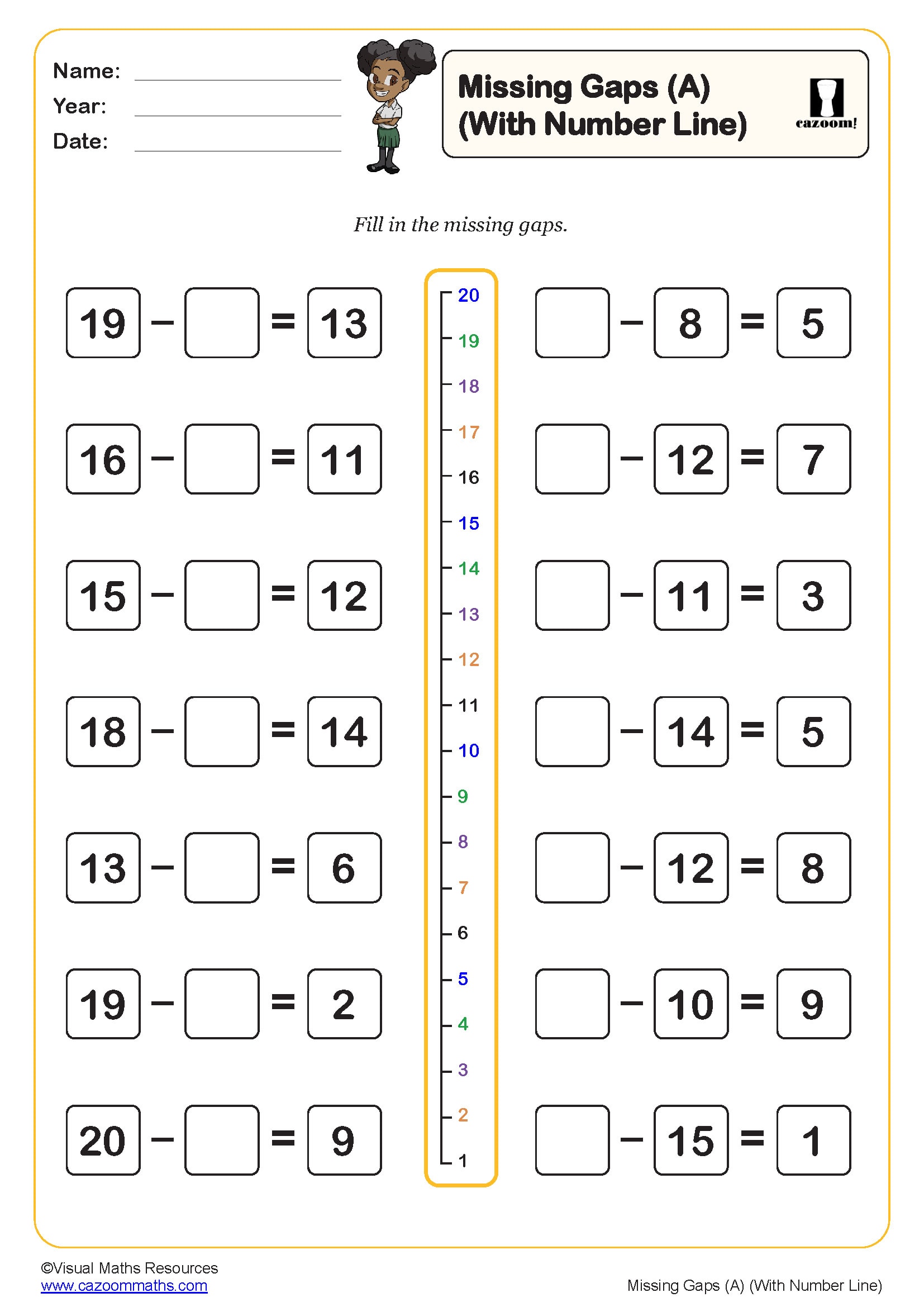
Missing Gaps (B) (With a Number Line)
Year groups: 2
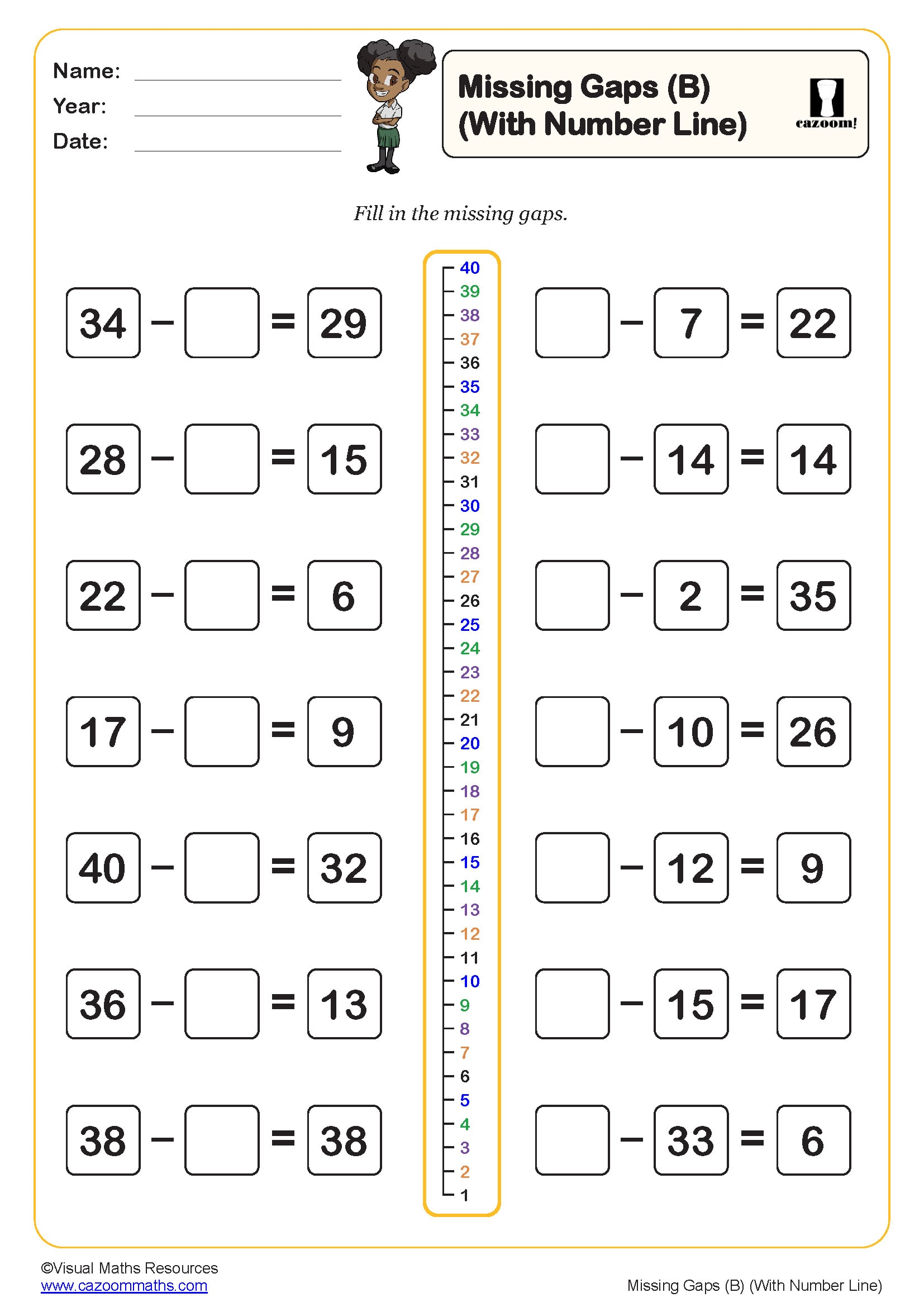
Subtracting from Multiples of 10 (A)
Year groups: 2
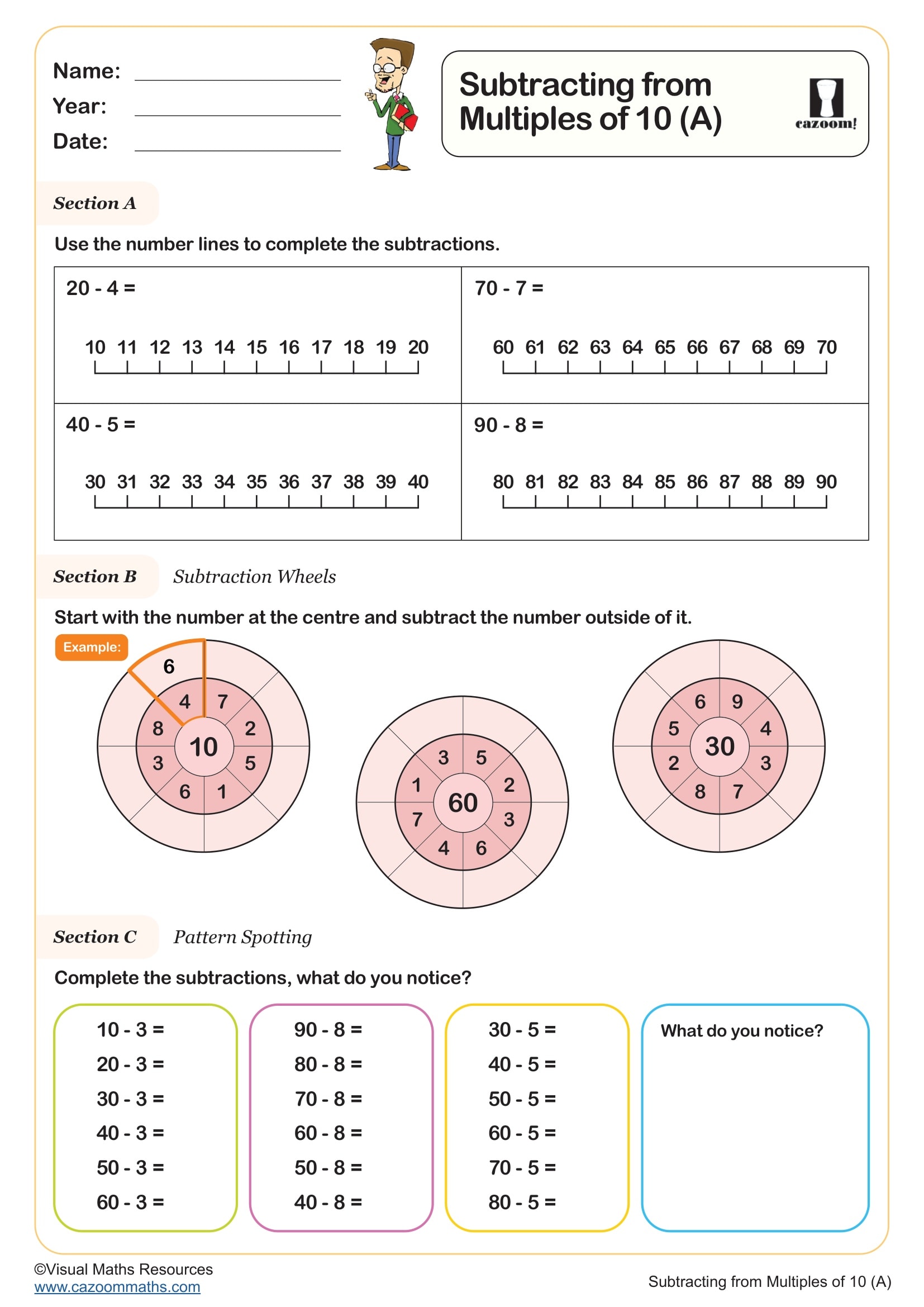
Subtracting Single Digits from Two Digit Numbers (Using Number Lines)
Year groups: 2
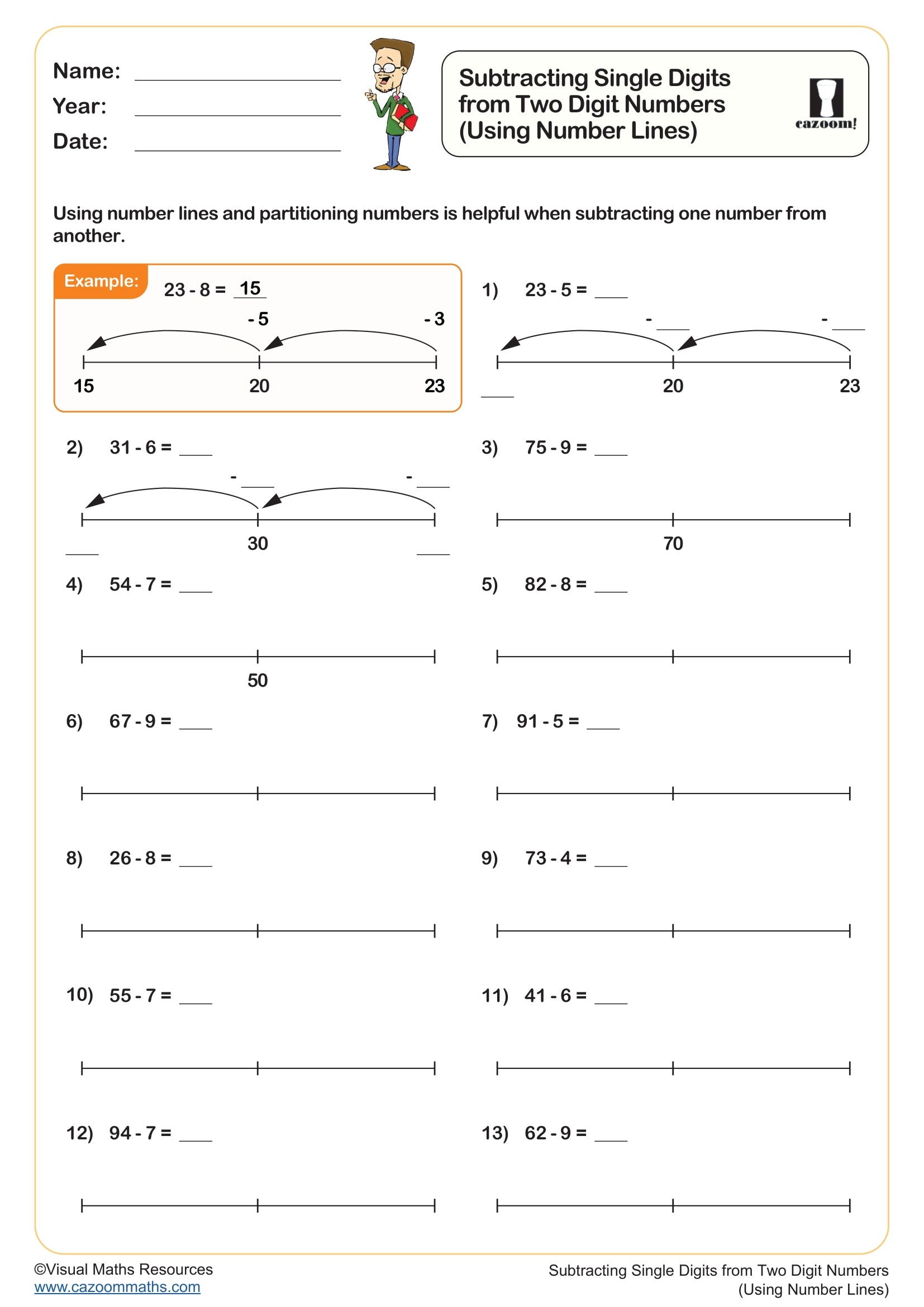
What's the Difference? (A)
Year groups: 2
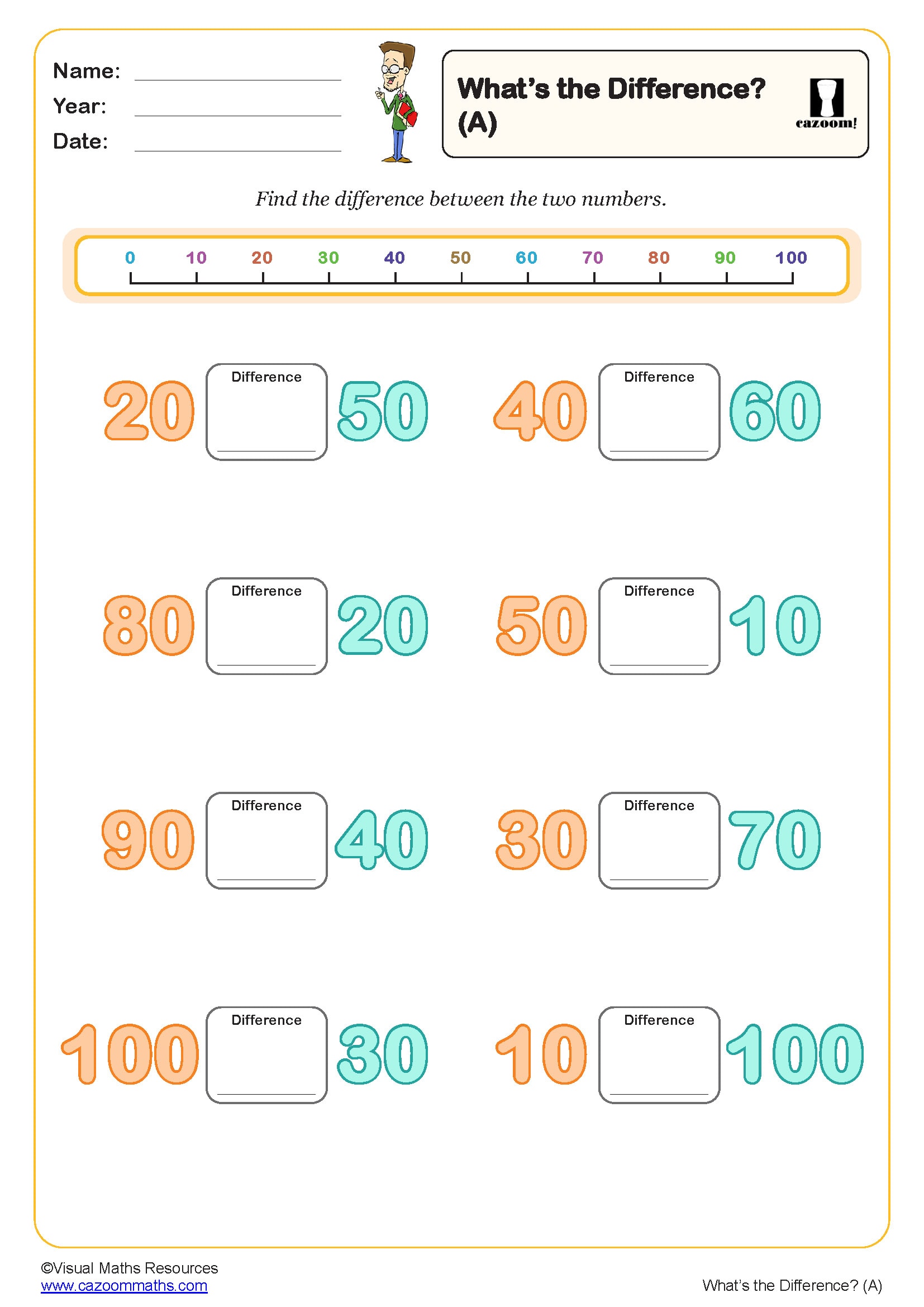
What's the Difference? (B)
Year groups: 2
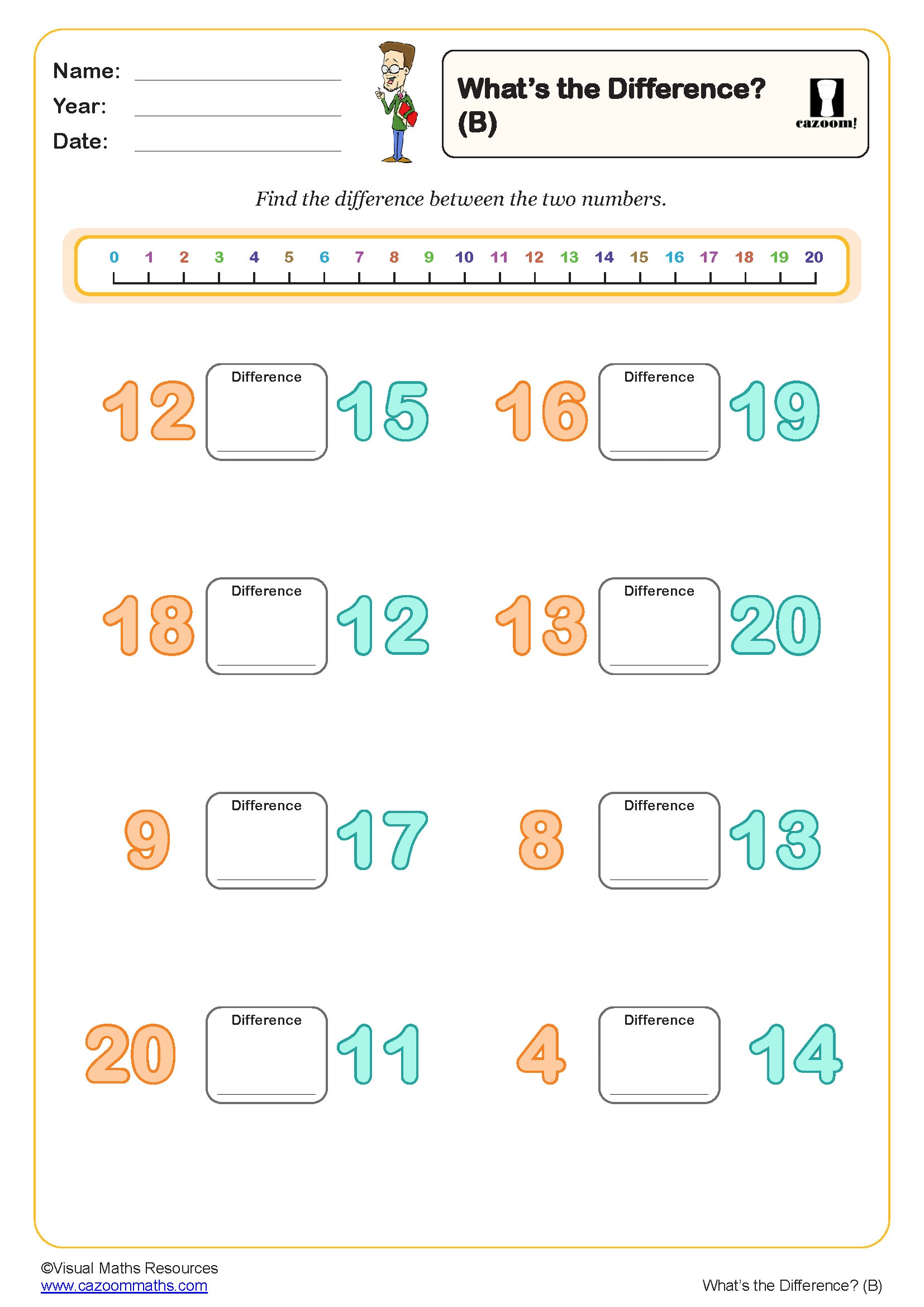
10 More 10 Less
Year groups: 3
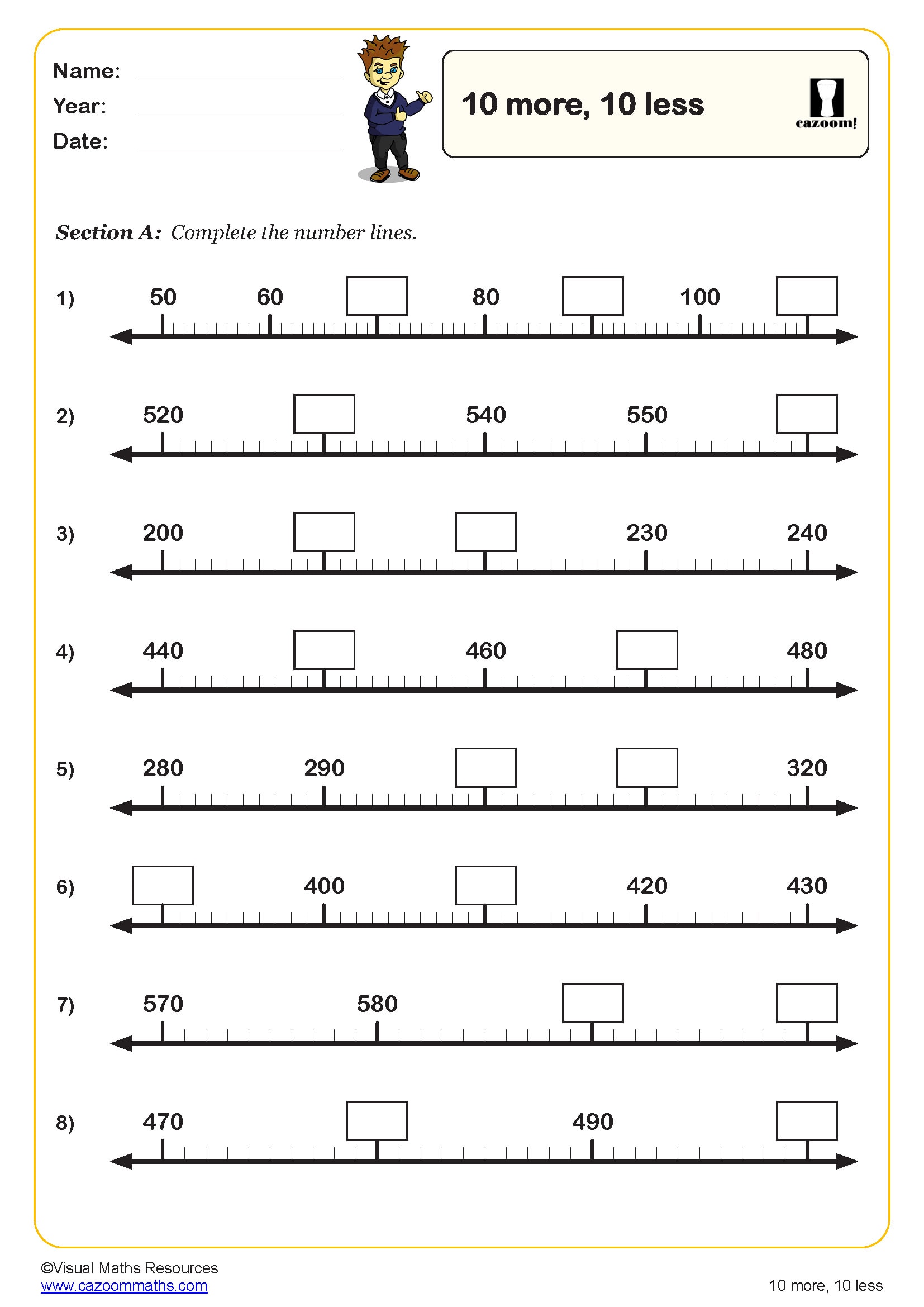
Compare and Order Numbers to 1000
Year groups: 3
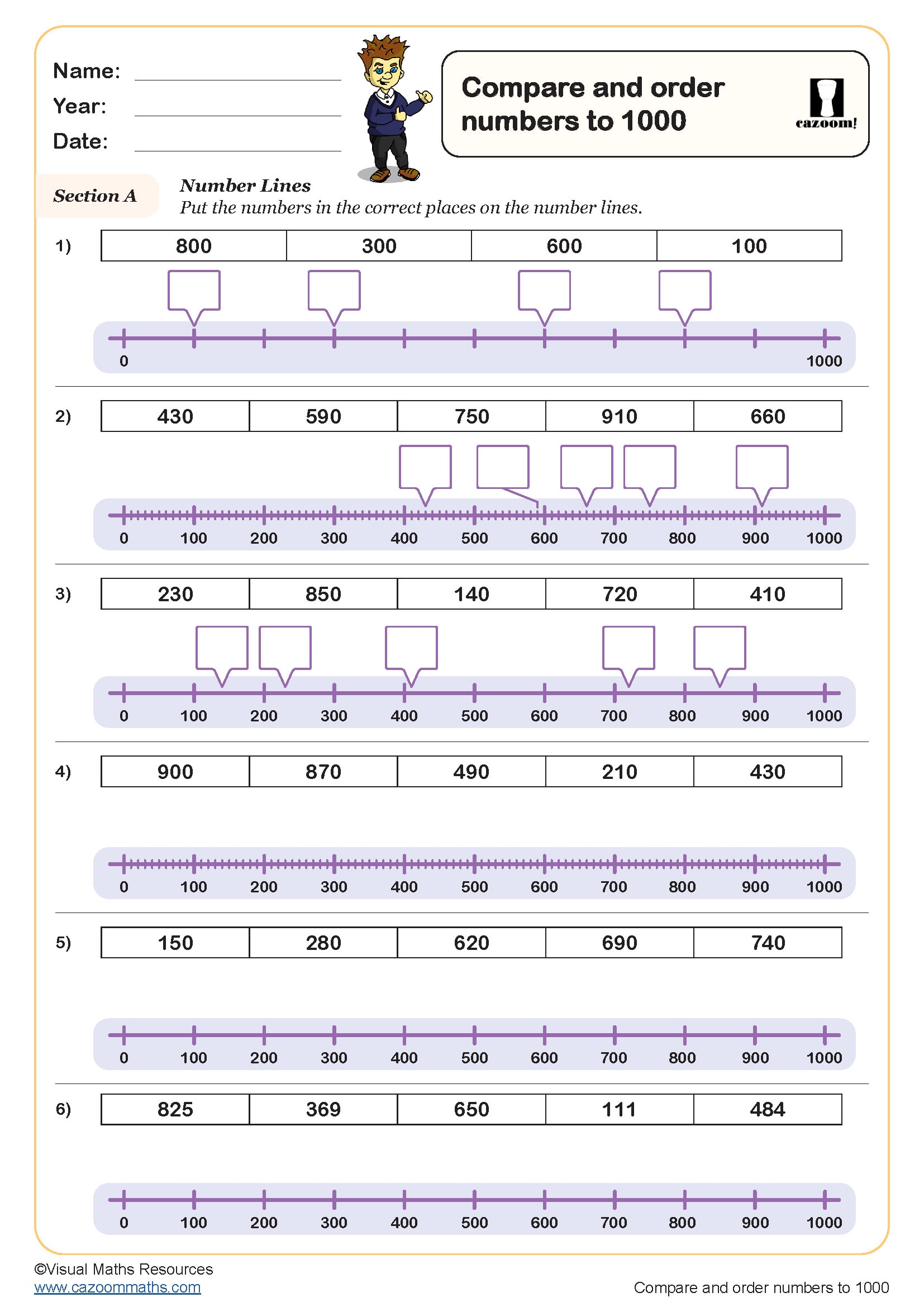
Labelling a Number Line with Fractions
Year groups: 3
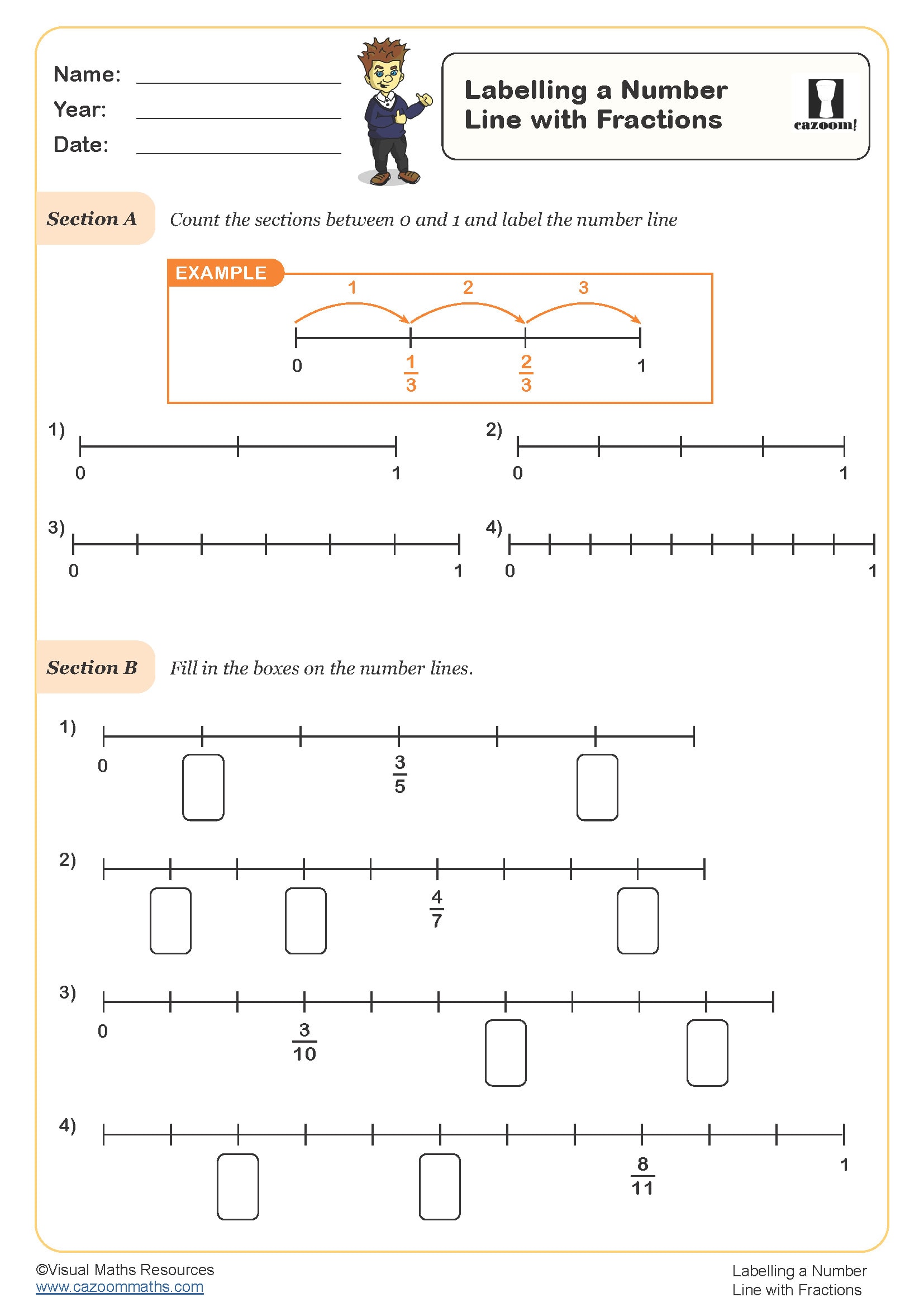
Number Lines to 1,000
Year groups: 3
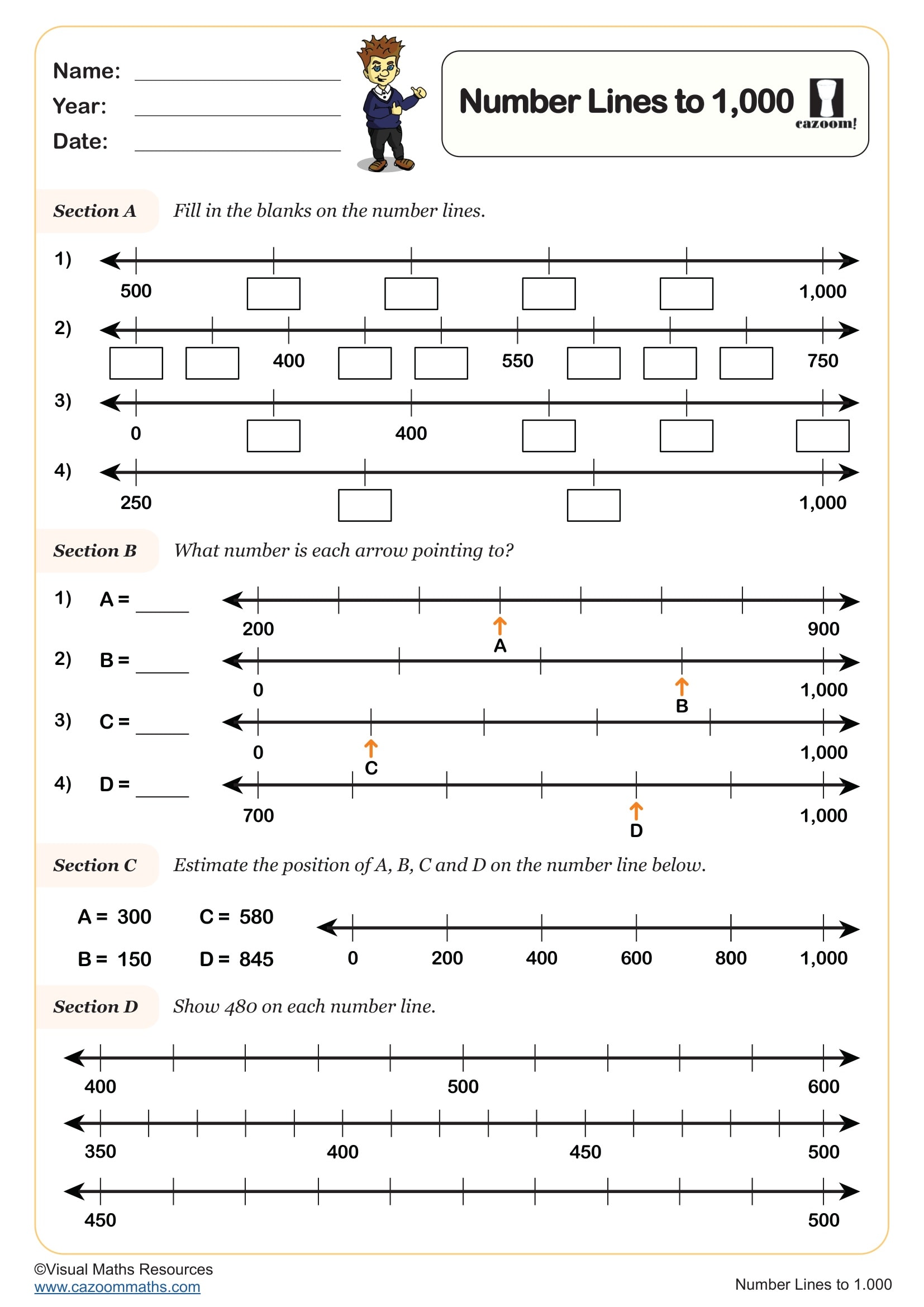
Subtracting Ones from 3 Digit Numbers (With Exchanges) - Using Number Lines
Year groups: 3
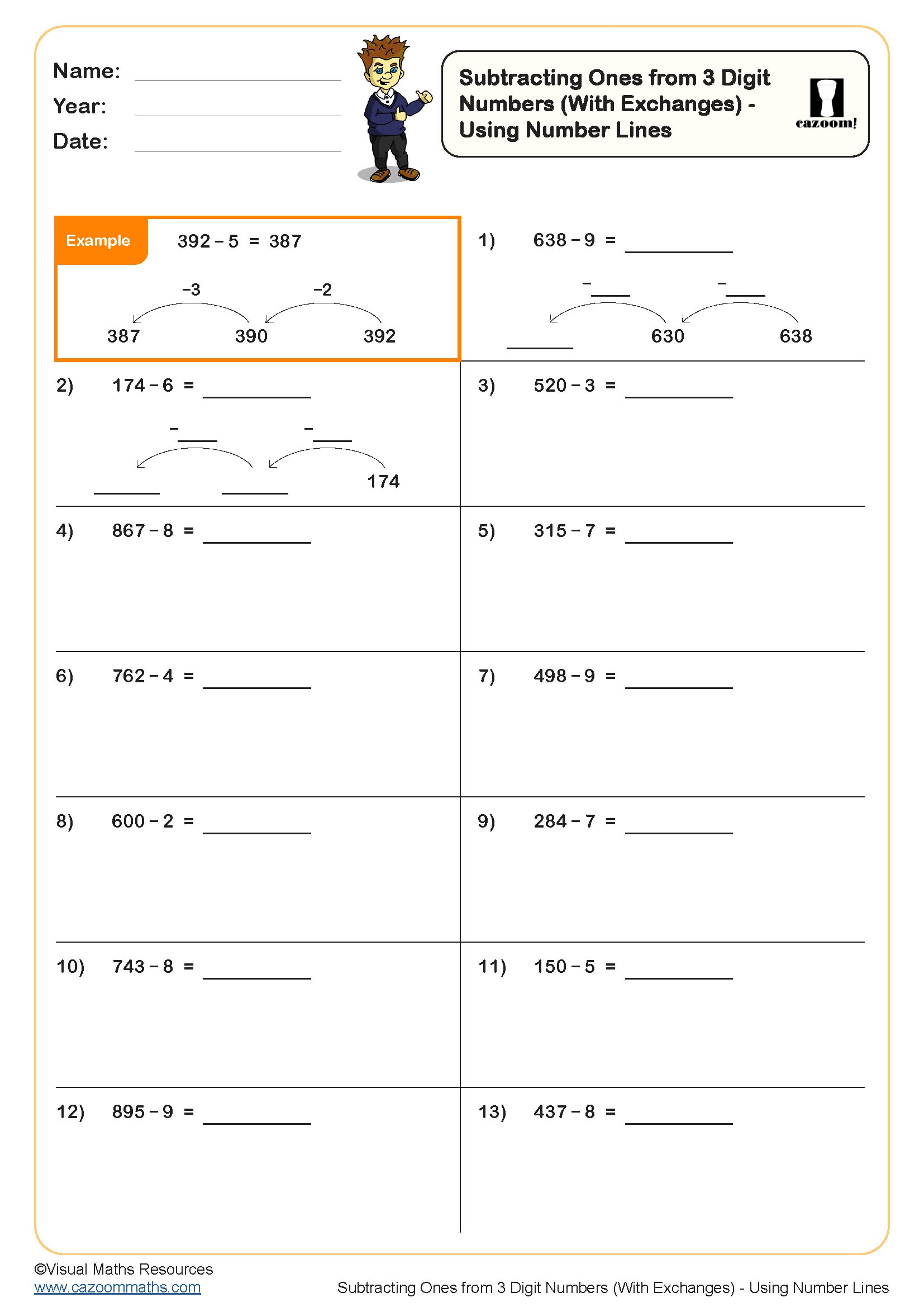
Using a Time Line to Find Durations
Year groups: 3
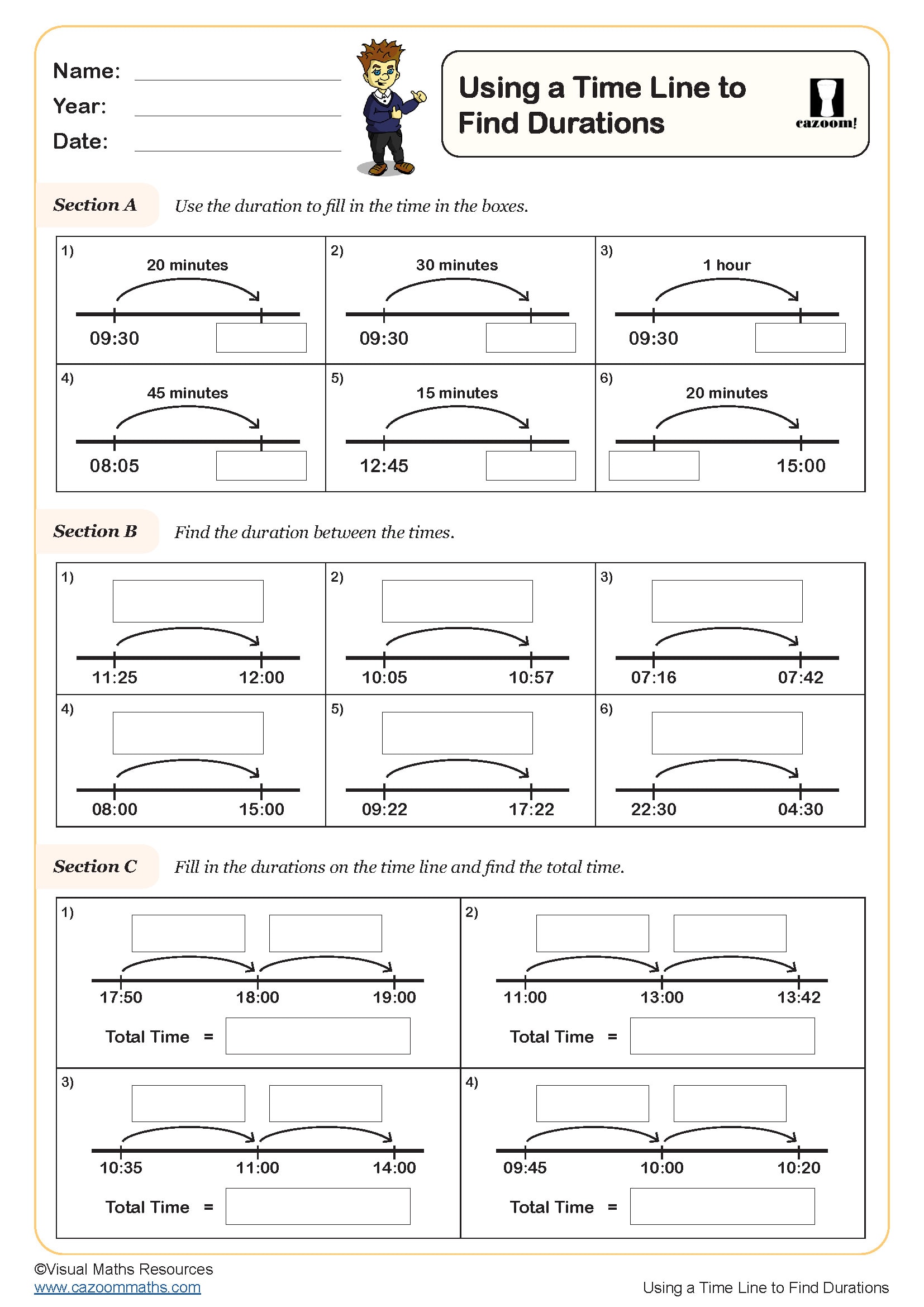
Adding Fractions and Mixed Numbers with the Same Denominator
Year groups: 4
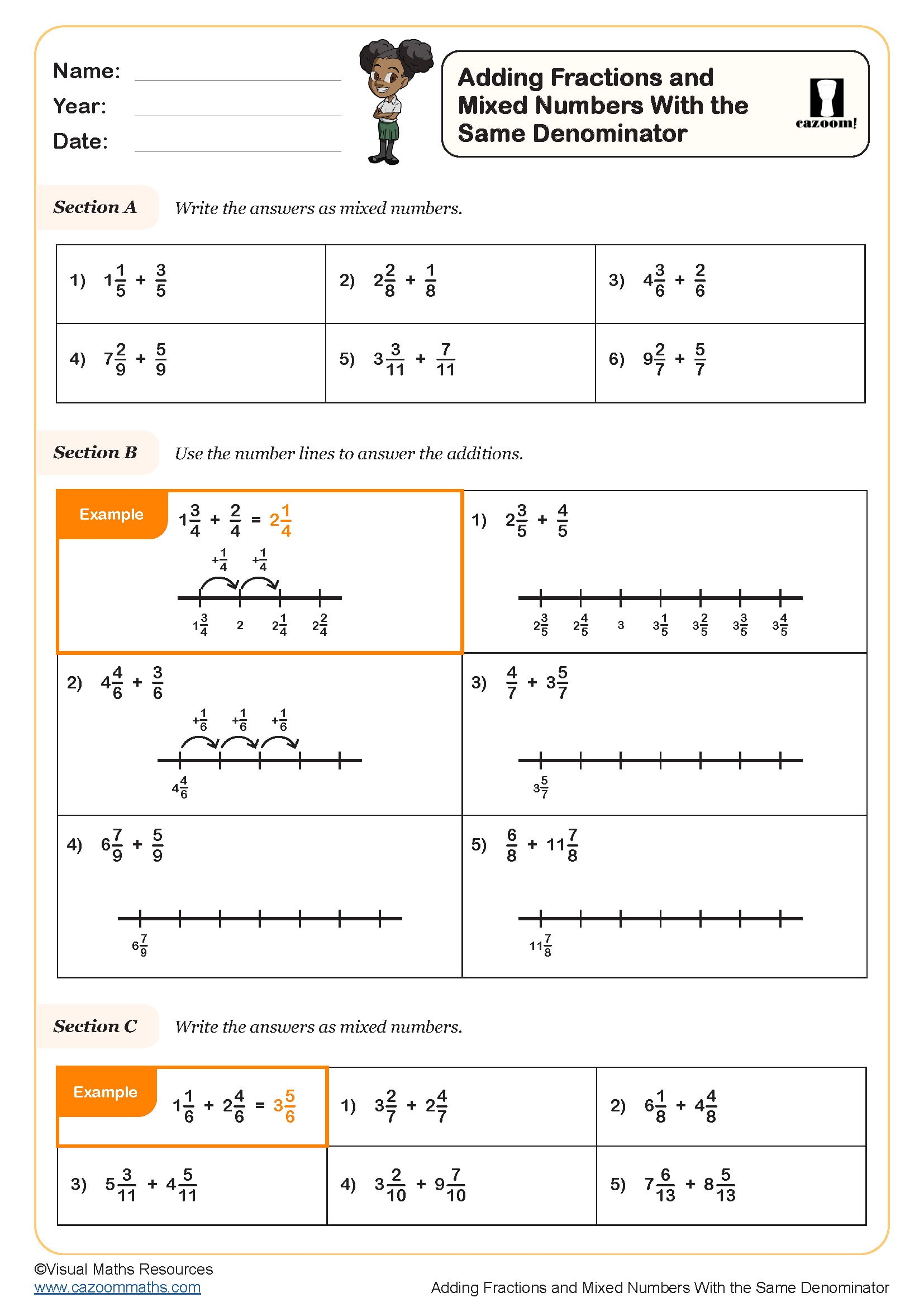
Decimals on a Number Line - Beyond 1
Year groups: 4
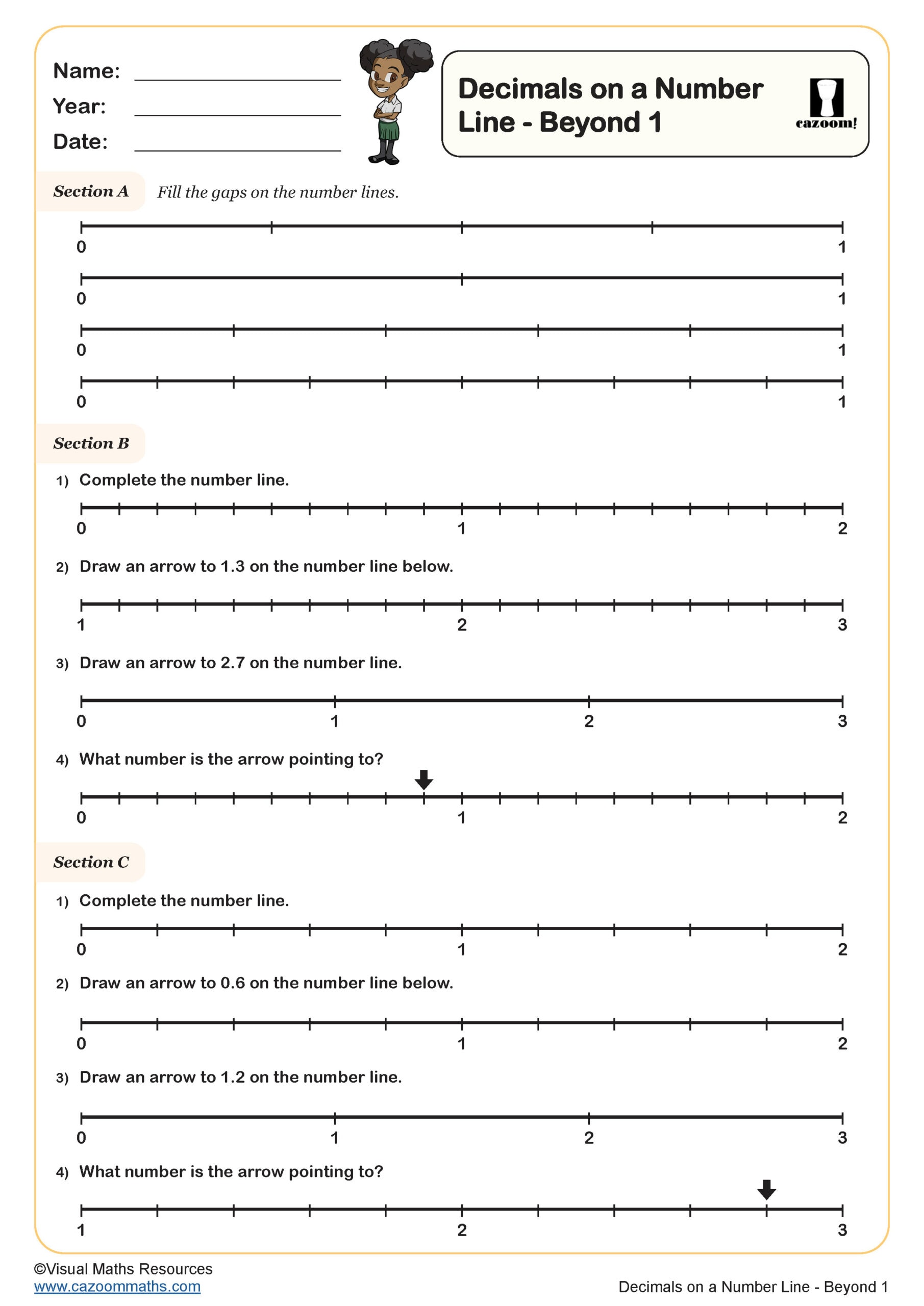
Decimals on a Number Line - Up to 1
Year groups: 4
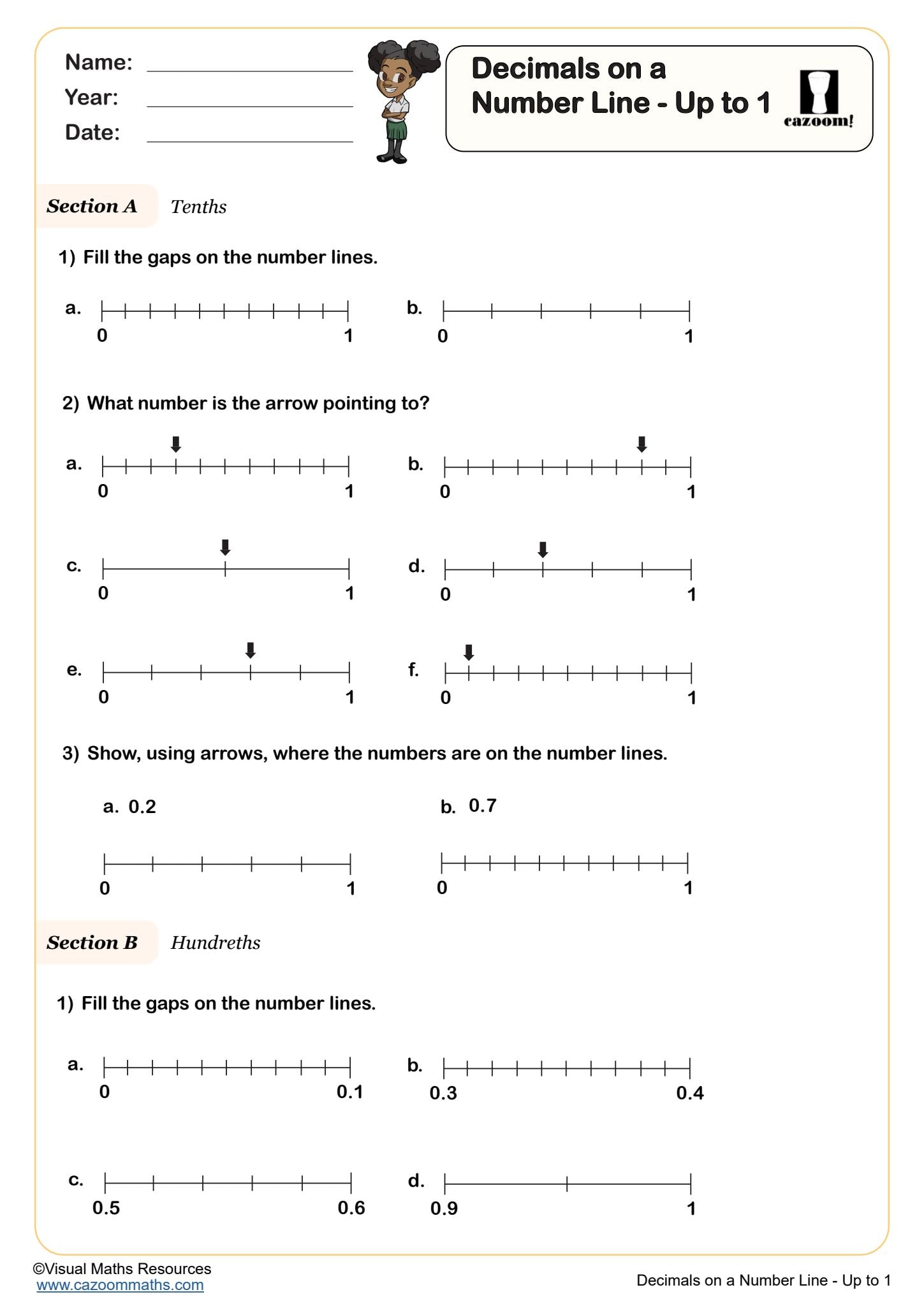
Fractions Greater Than One - Improper Fractions
Year groups: 4, 5
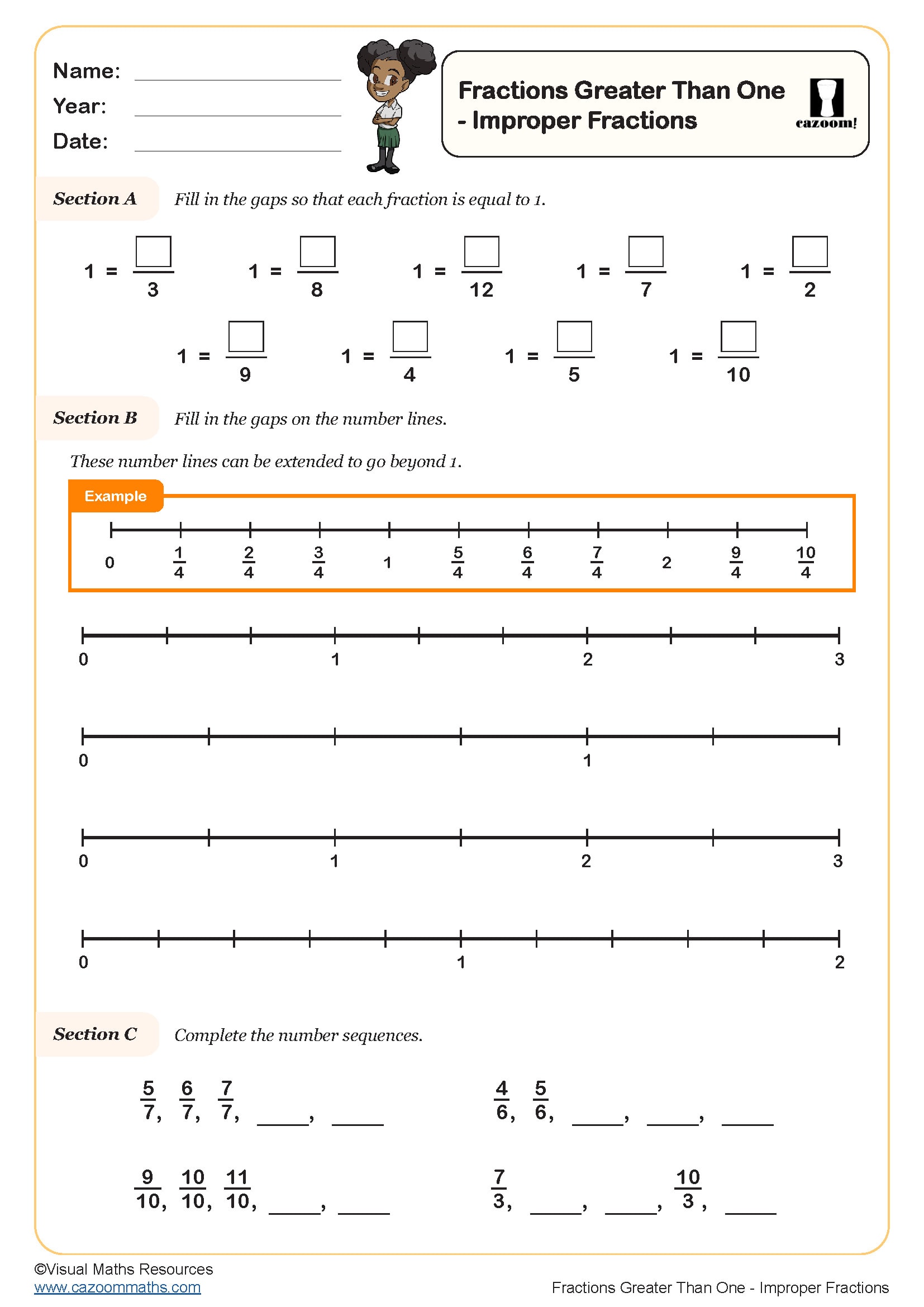
Fractions Greater Than One - Mixed Numbers
Year groups: 4, 5
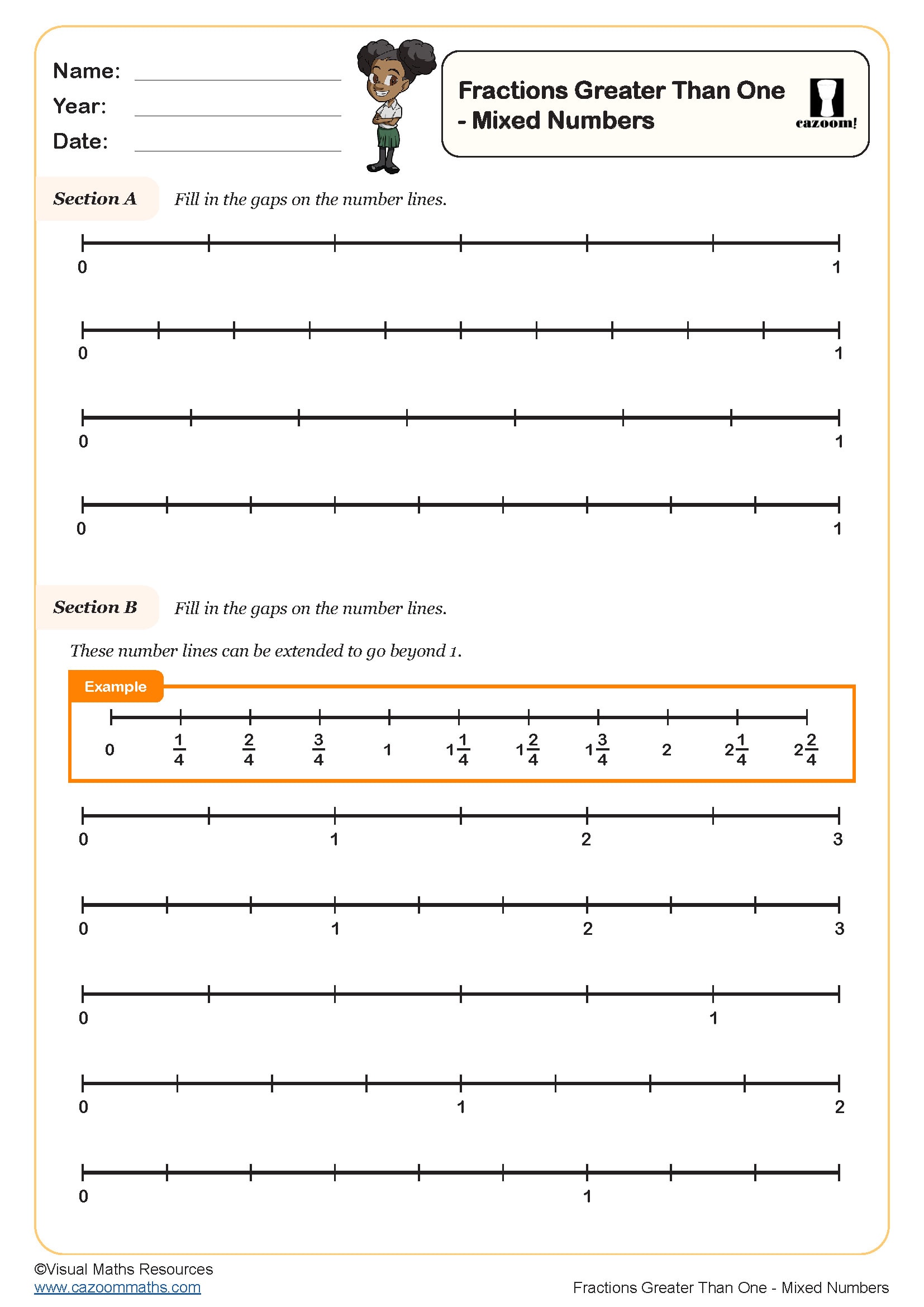
Negative Numbers
Year groups: 4
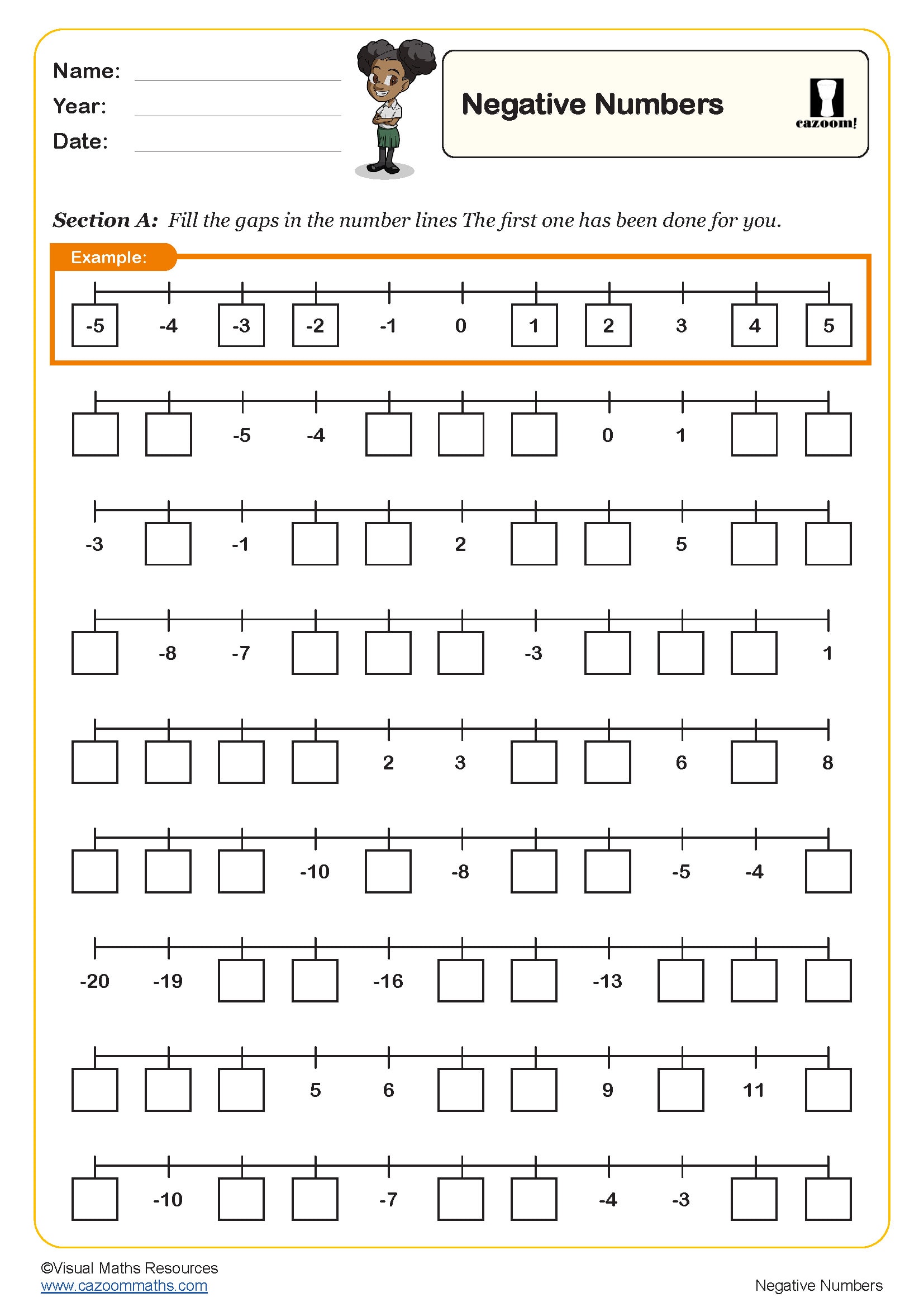
Rounding Charts
Year groups: 4, 5
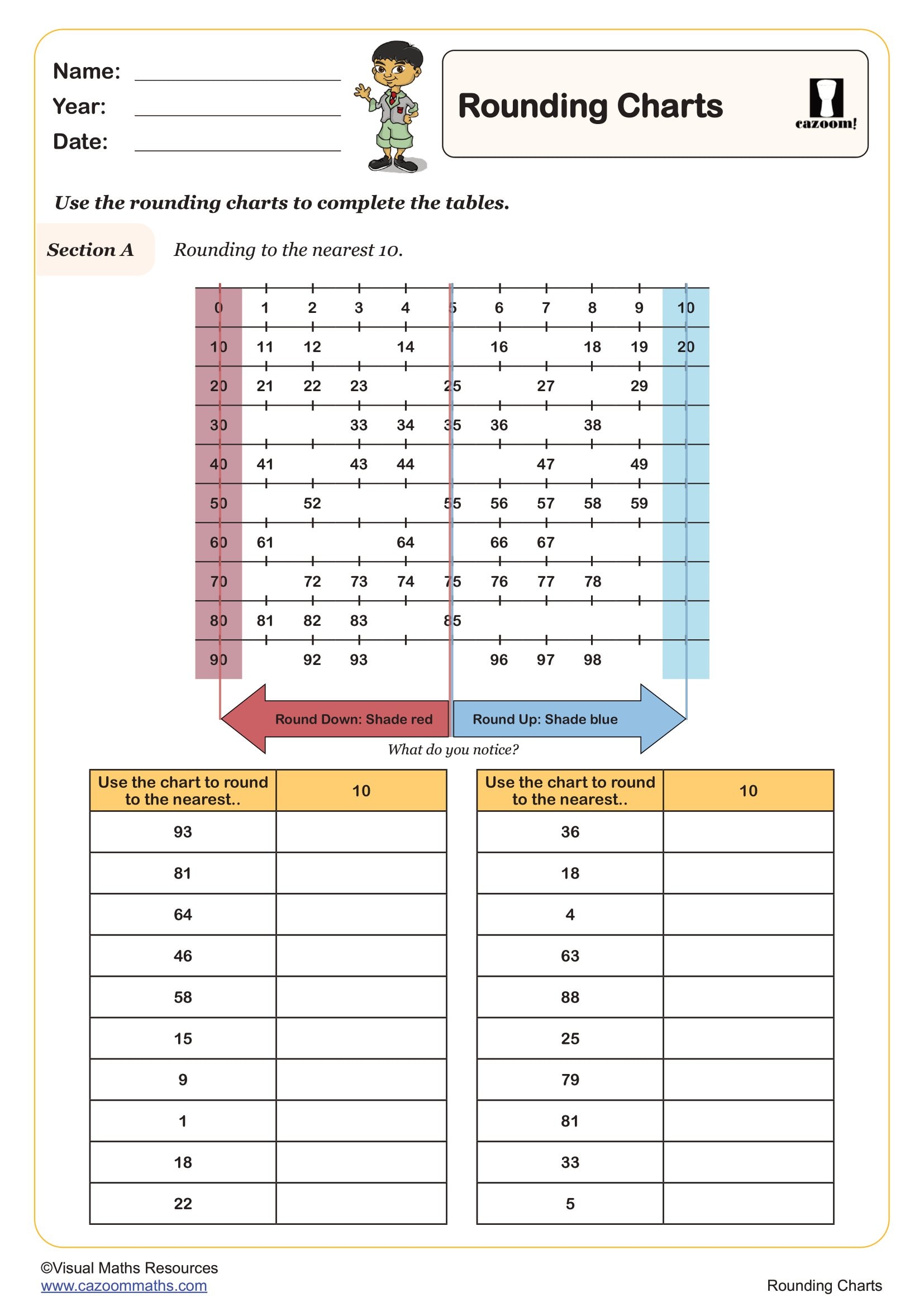
Rounding Numbers to the Nearest 10 Using Number Lines (A)
Year groups: 4
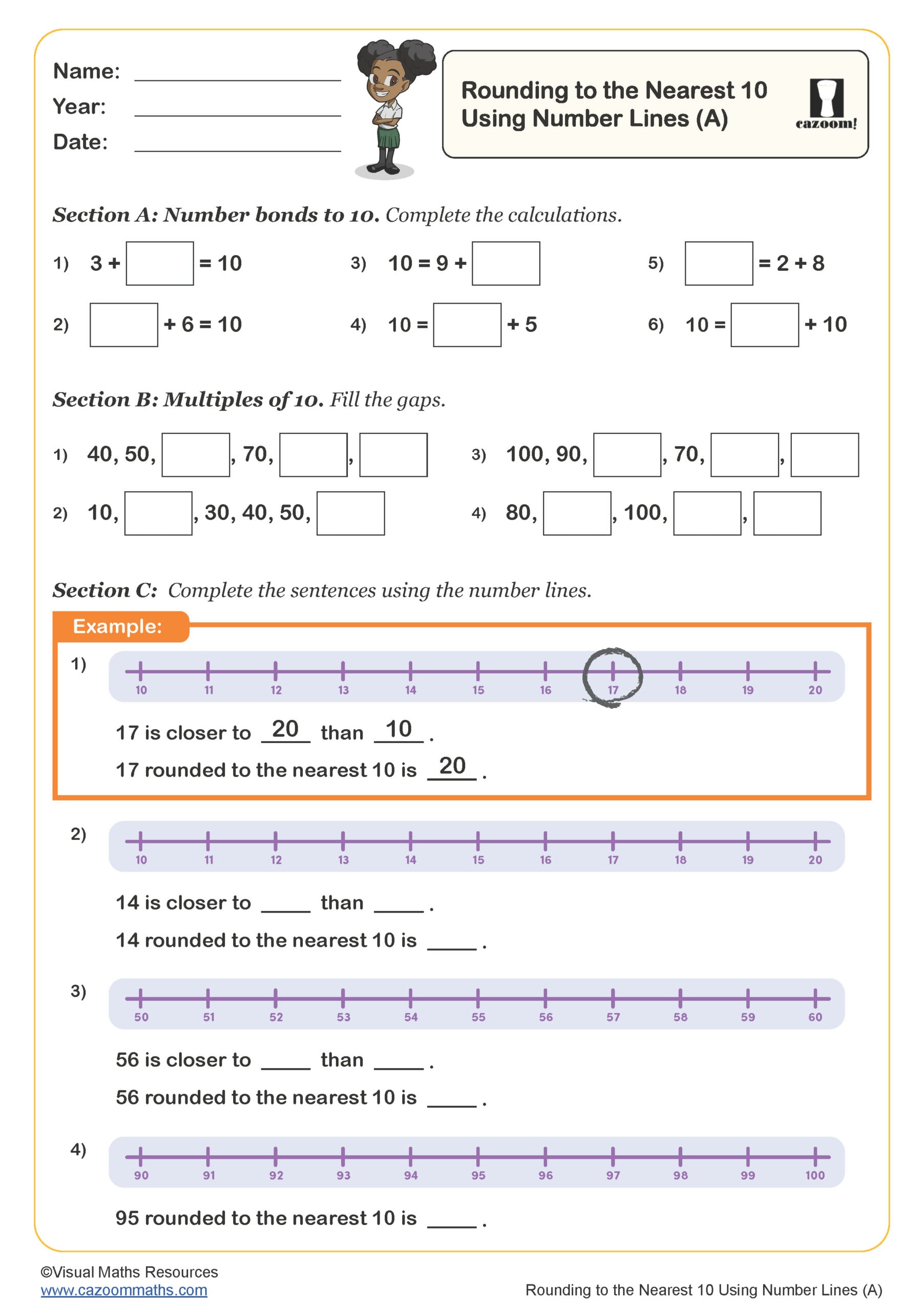
Rounding Numbers to the Nearest 10 Using Number Lines (B)
Year groups: 4
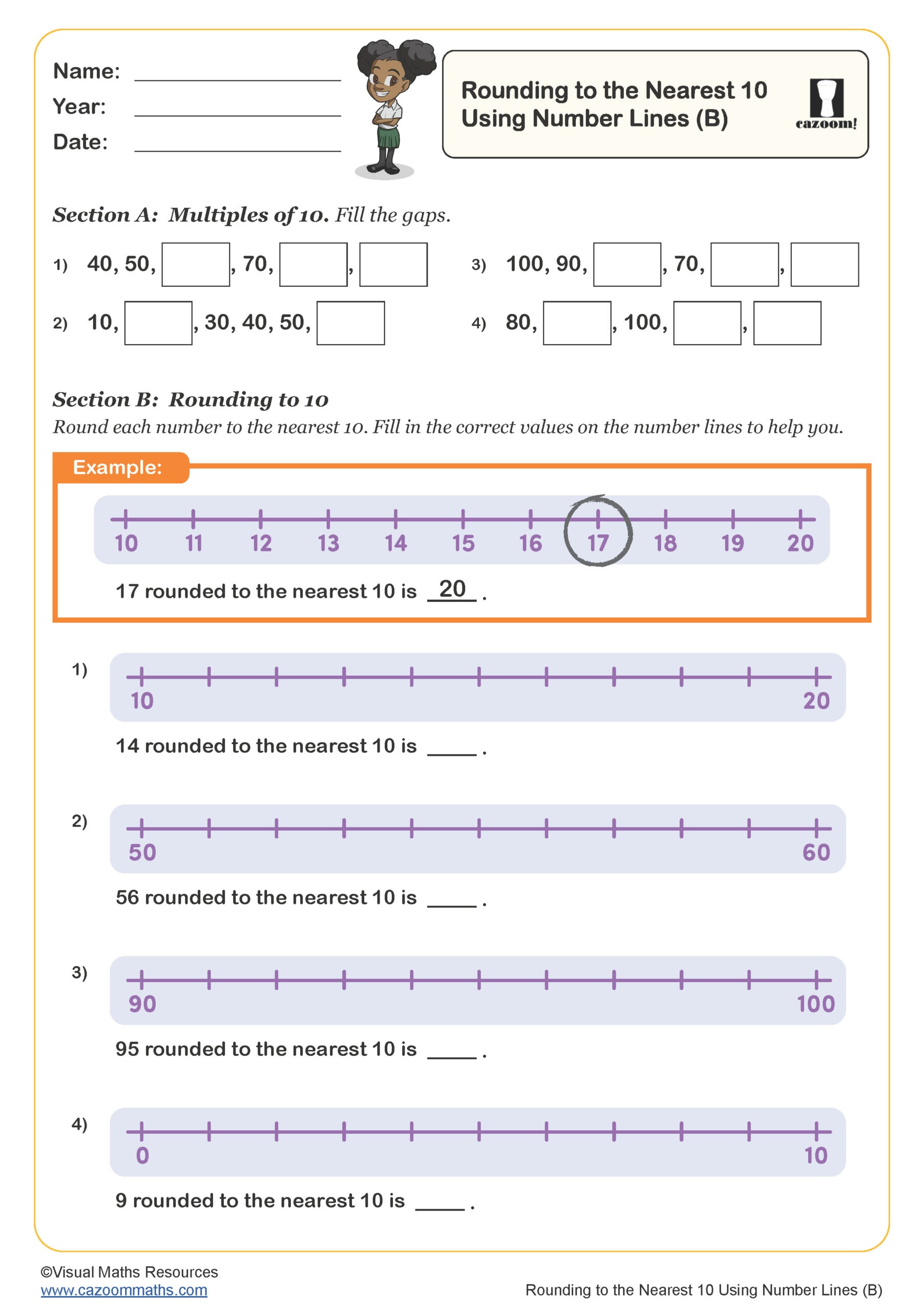
Rounding Numbers to the Nearest 10 Using Number Lines (C)
Year groups: 4
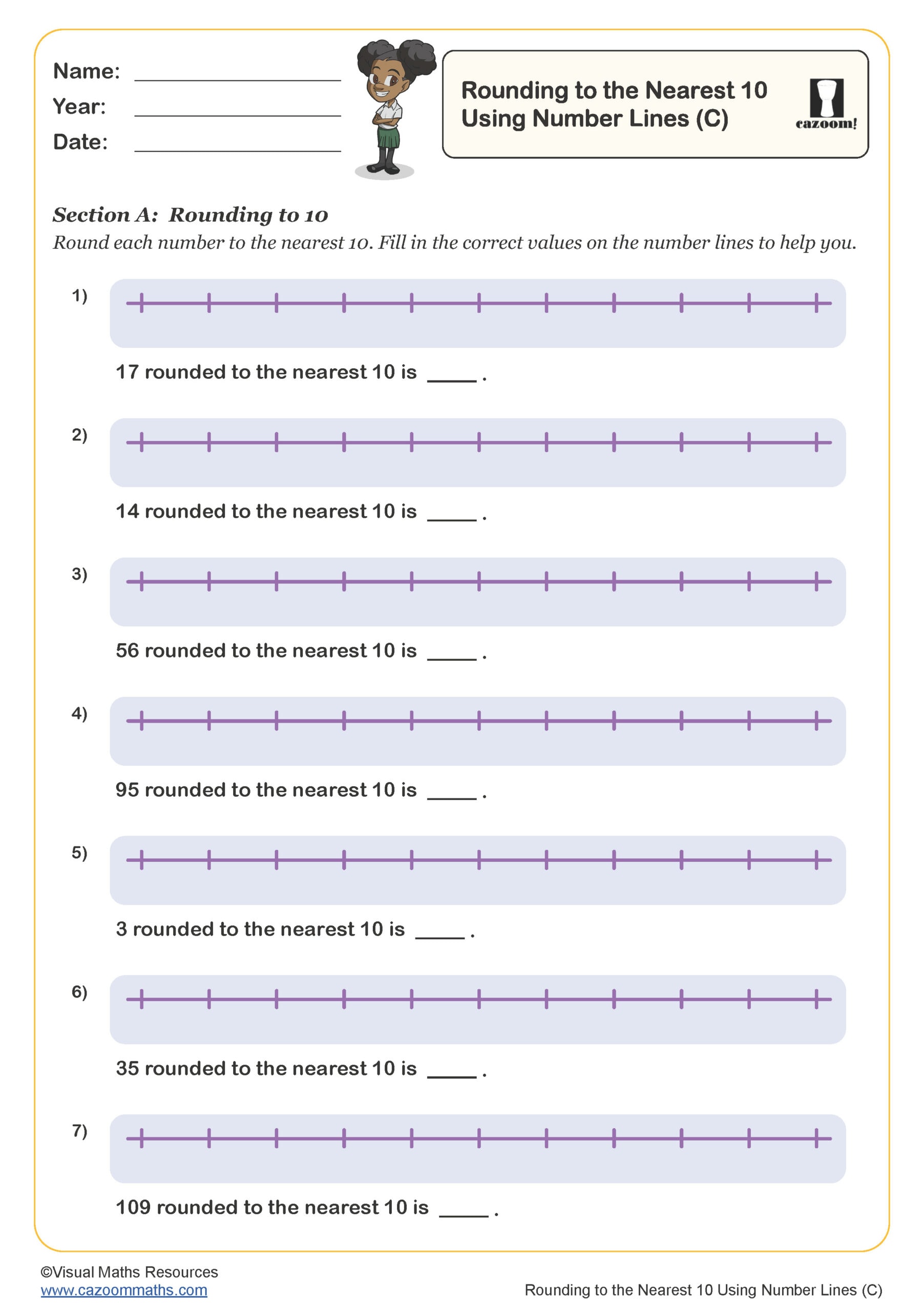
Rounding Numbers to the Nearest 100 Using Number Lines (A)
Year groups: 4
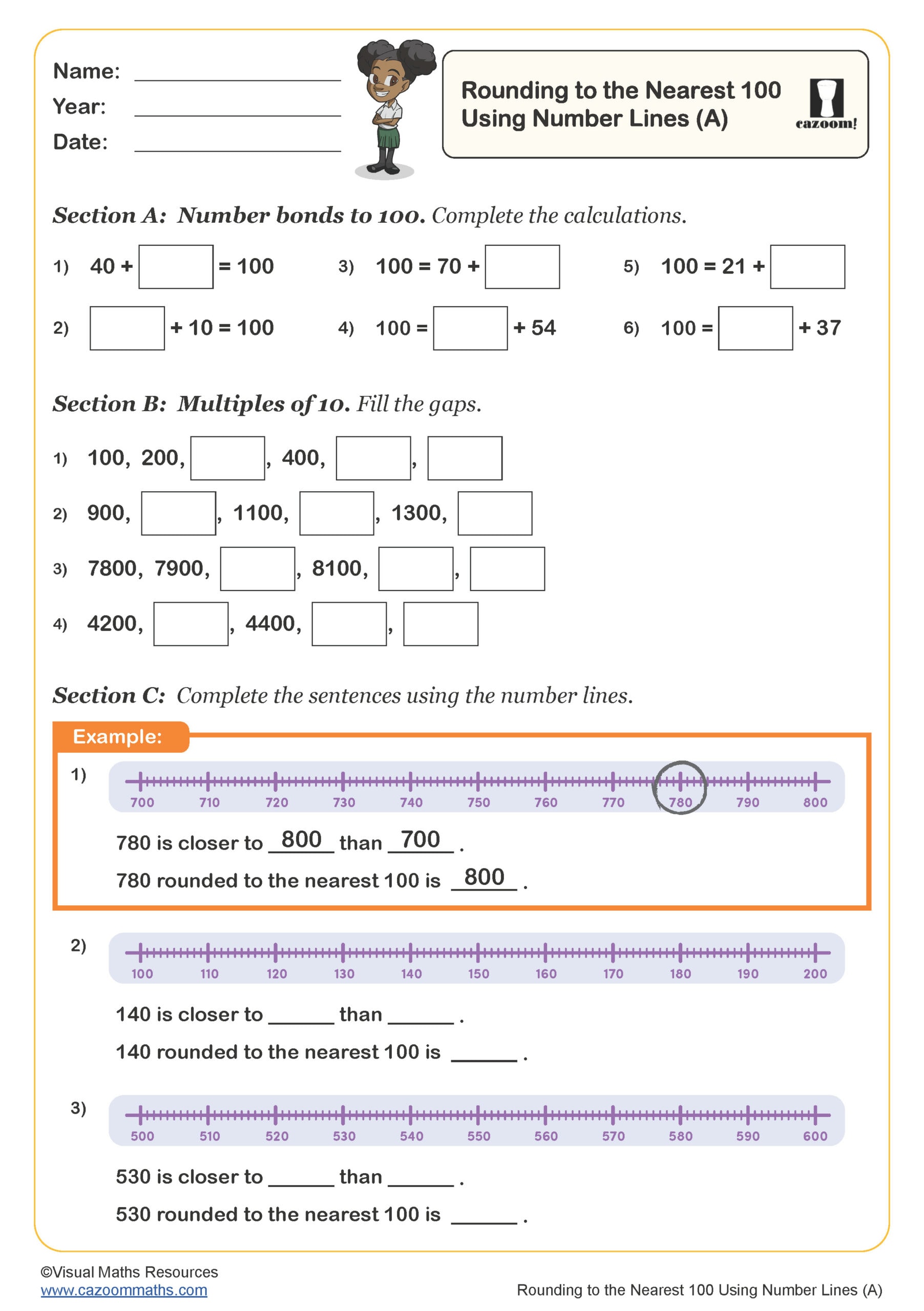
Rounding Numbers to the Nearest 100 Using Number Lines (B)
Year groups: 4
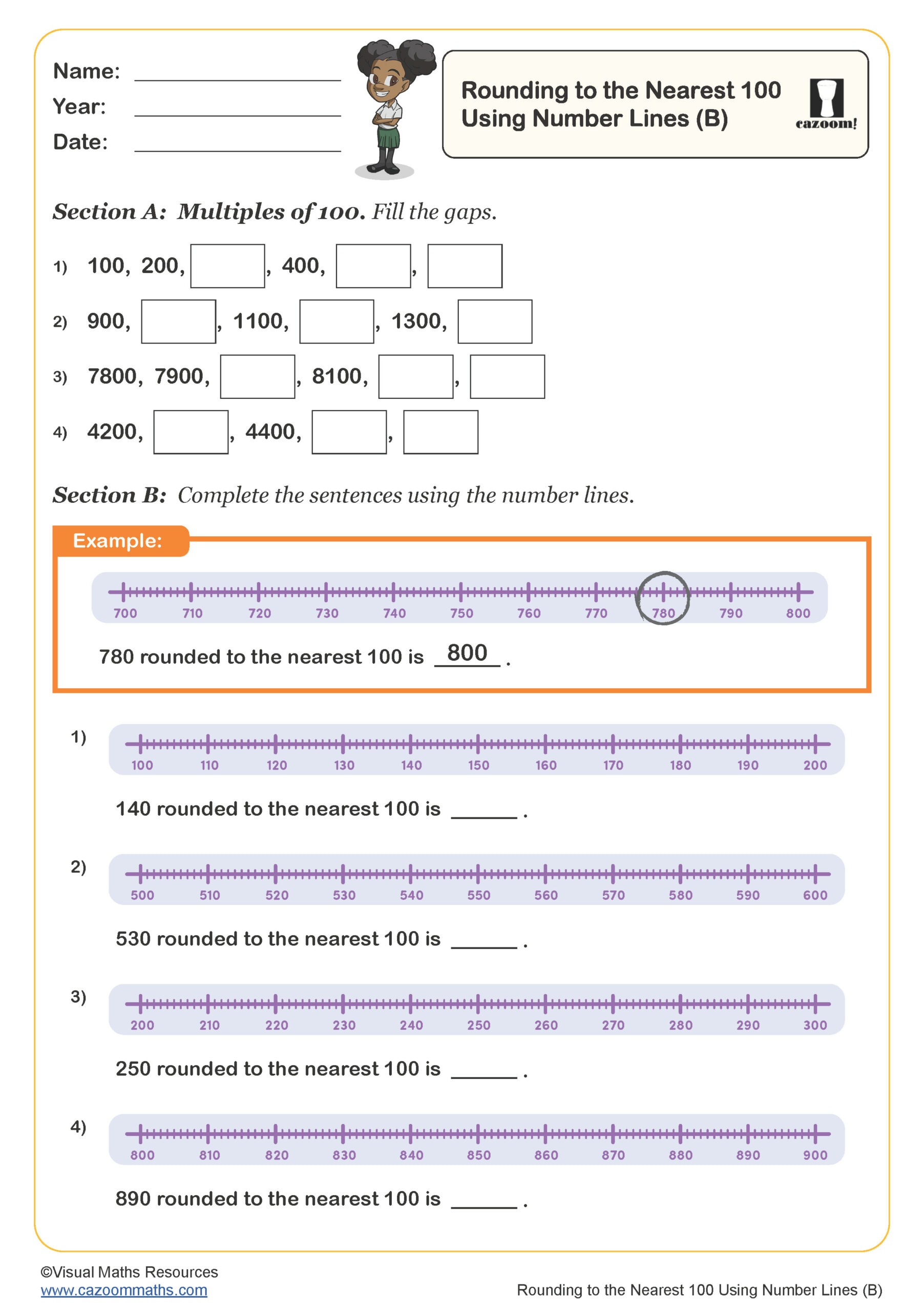
Rounding Numbers to the Nearest 100 Using Number Lines (C)
Year groups: 4
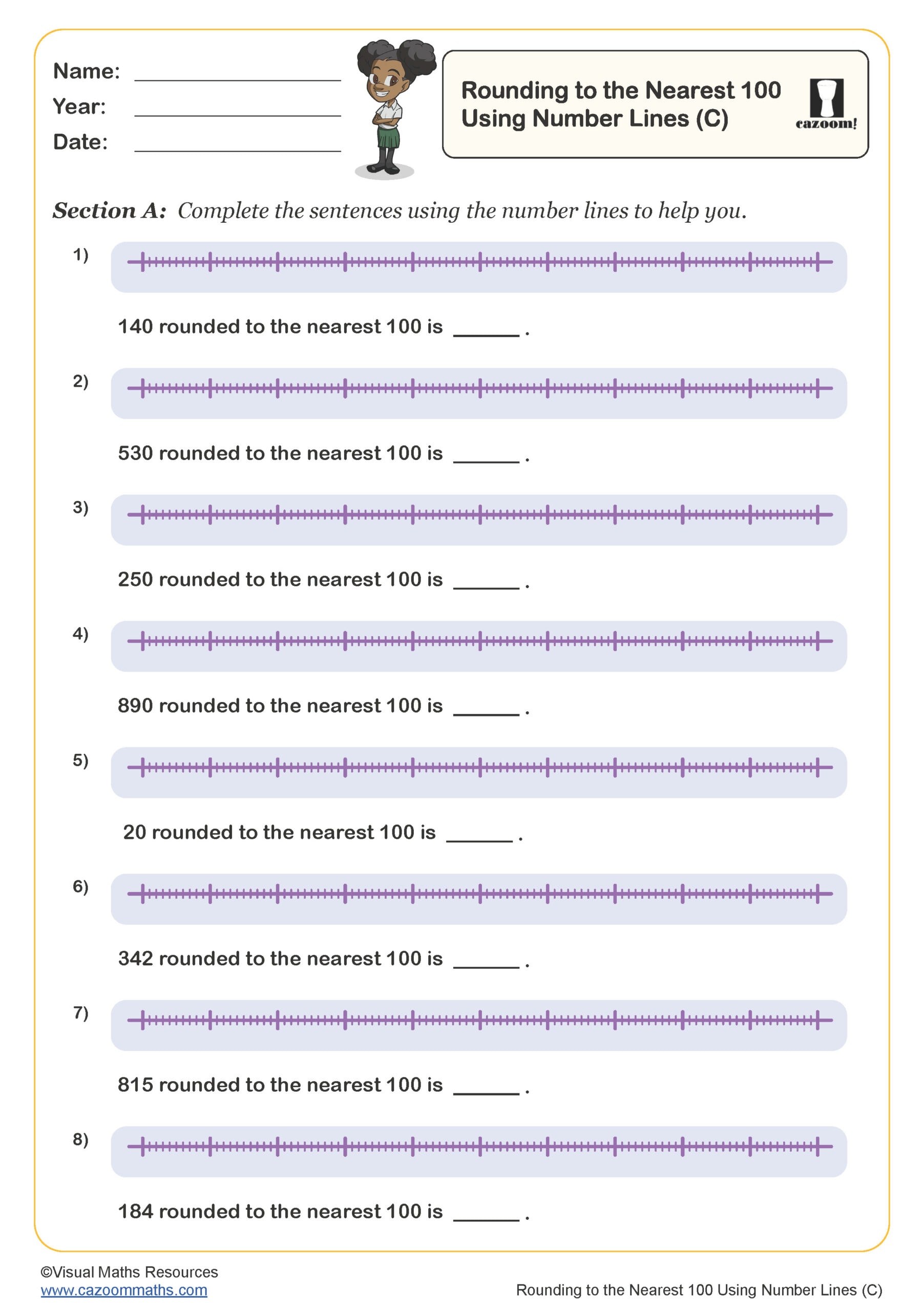
Rounding to the Nearest Multiple of 1,000
Year groups: 4
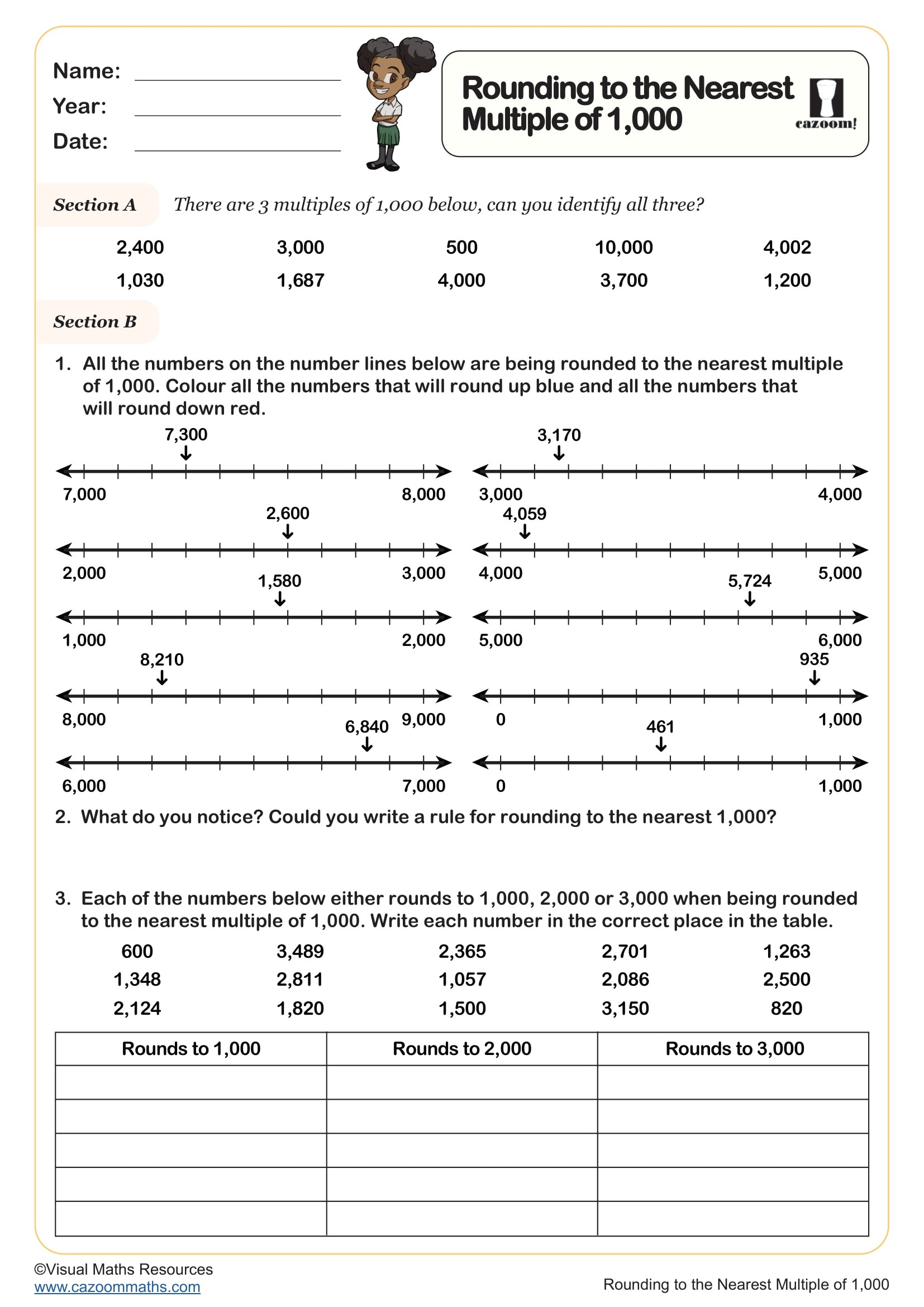
Rounding to Whole Numbers (A)
Year groups: 4
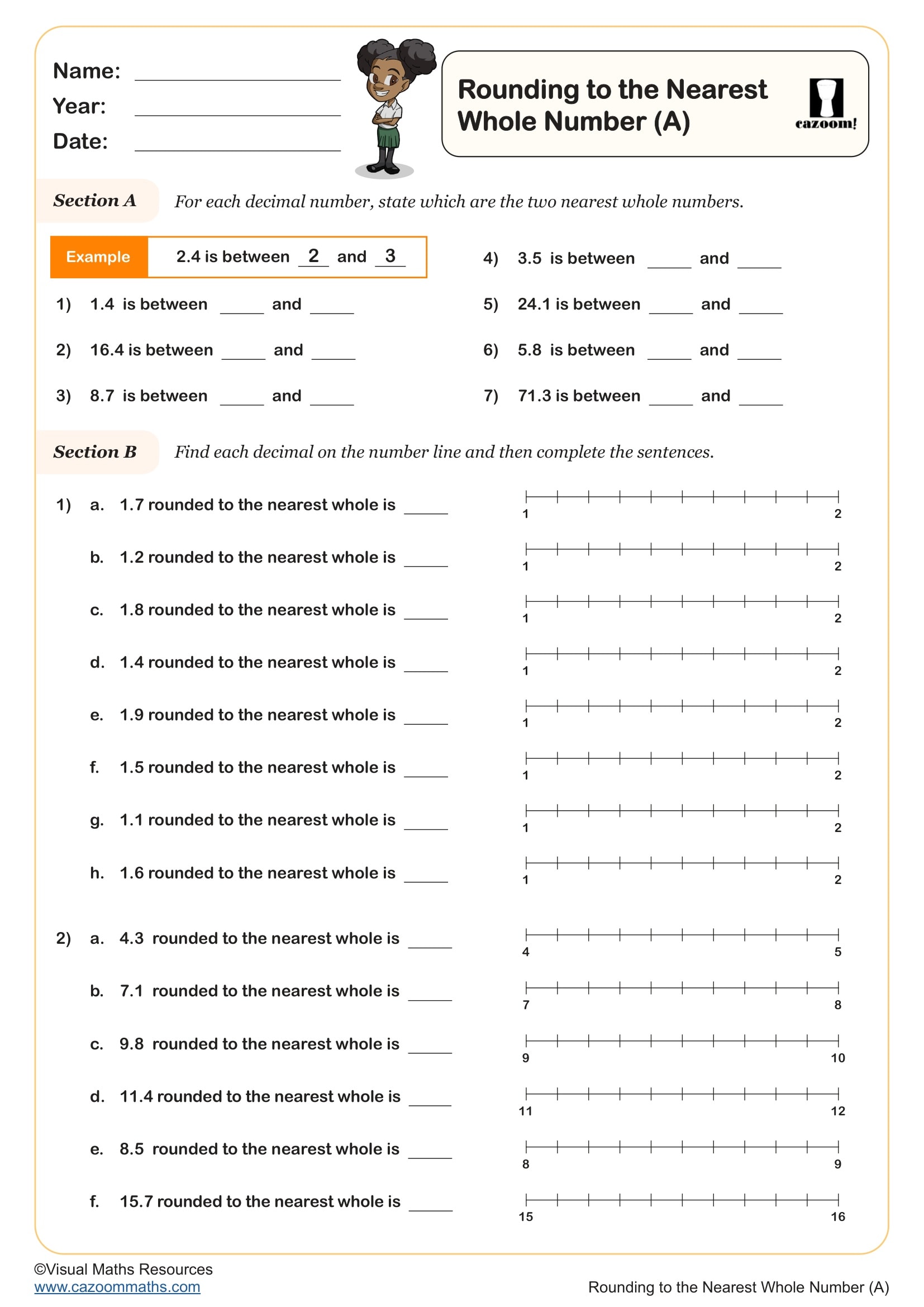
Subtracting Fractions and Mixed Numbers with the Same Denominator
Year groups: 4
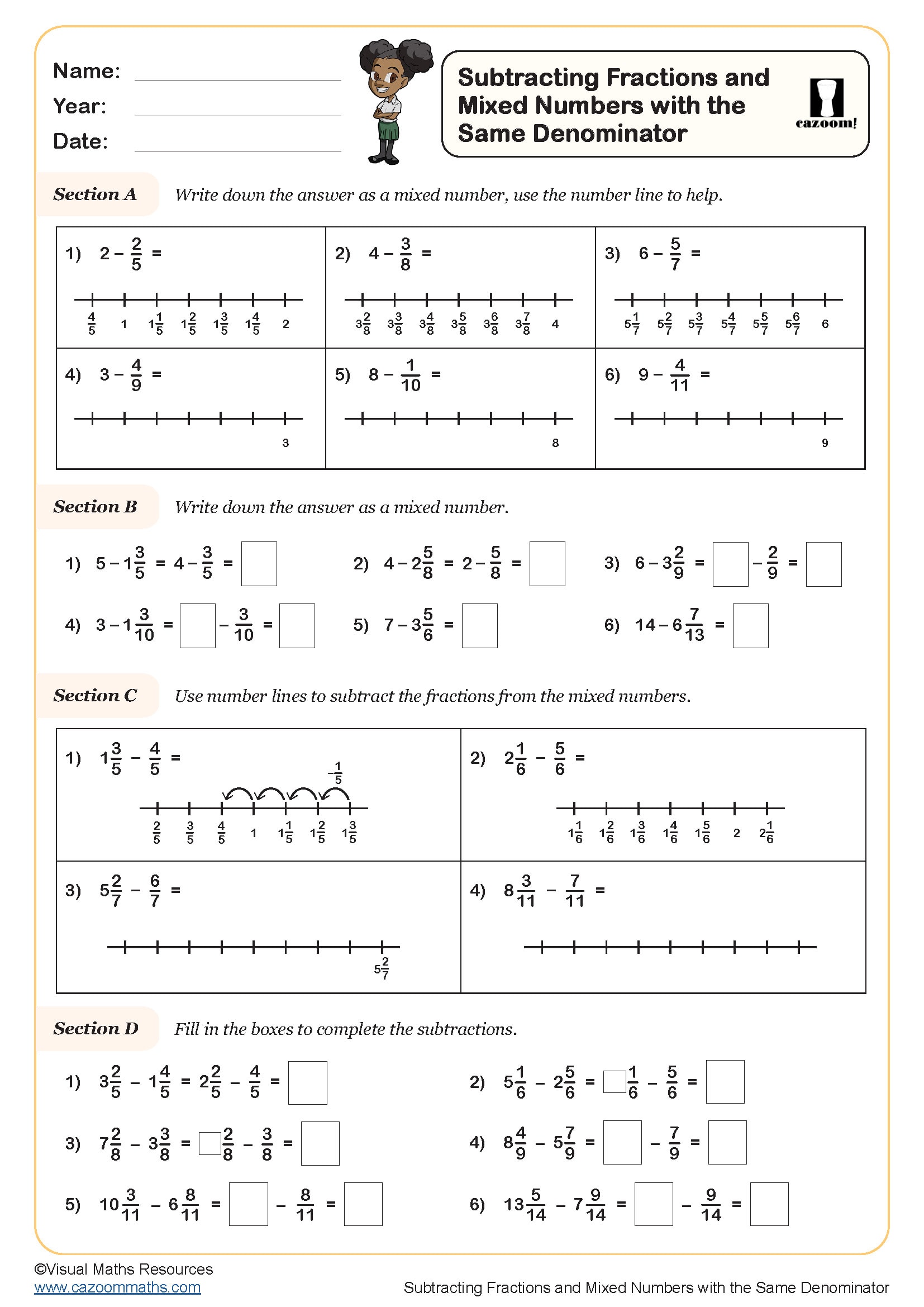
Whole Number and Improper Fraction Equivalence
Year groups: 4, 5
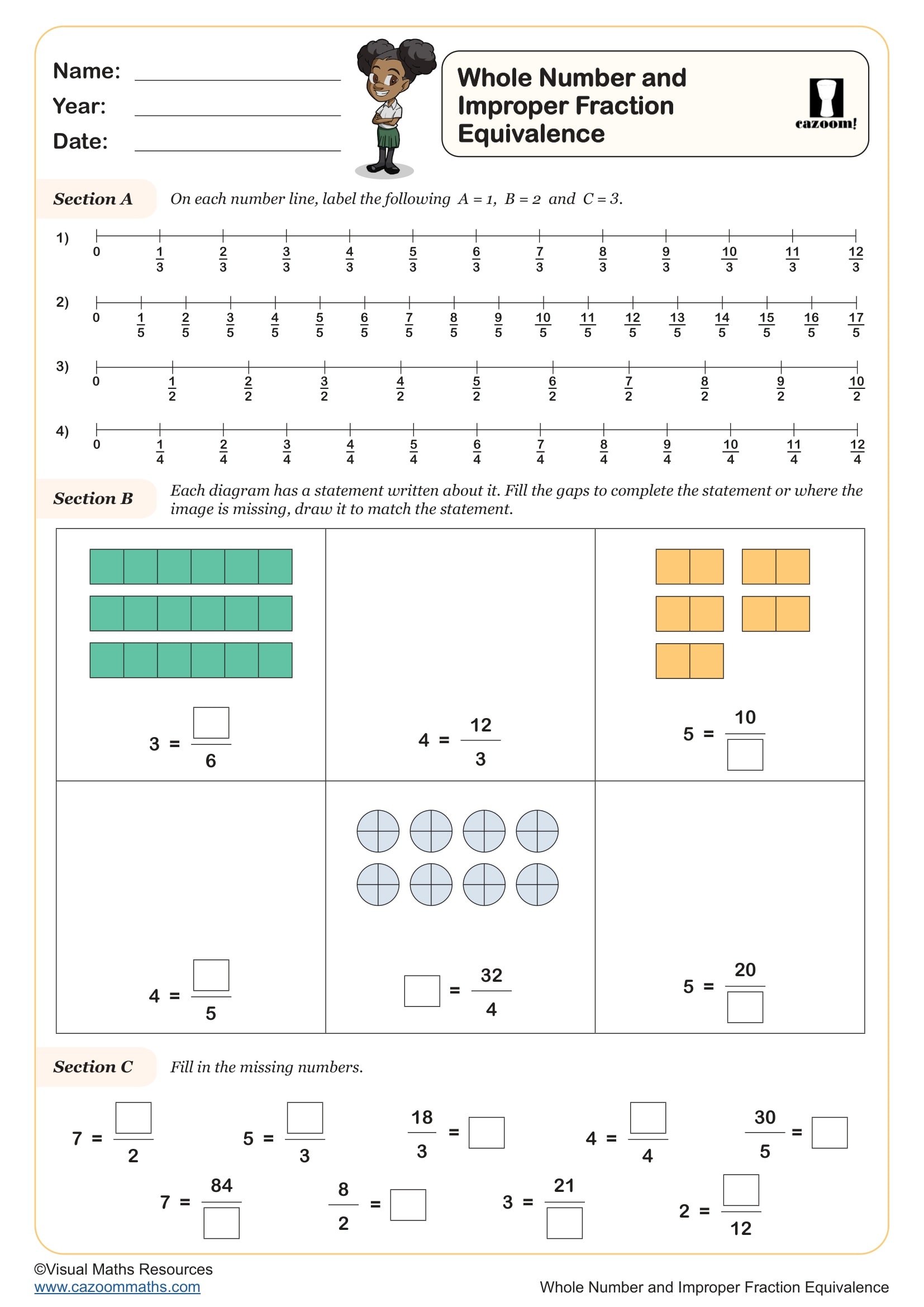
Decimals on Number Lines
Year groups: 5
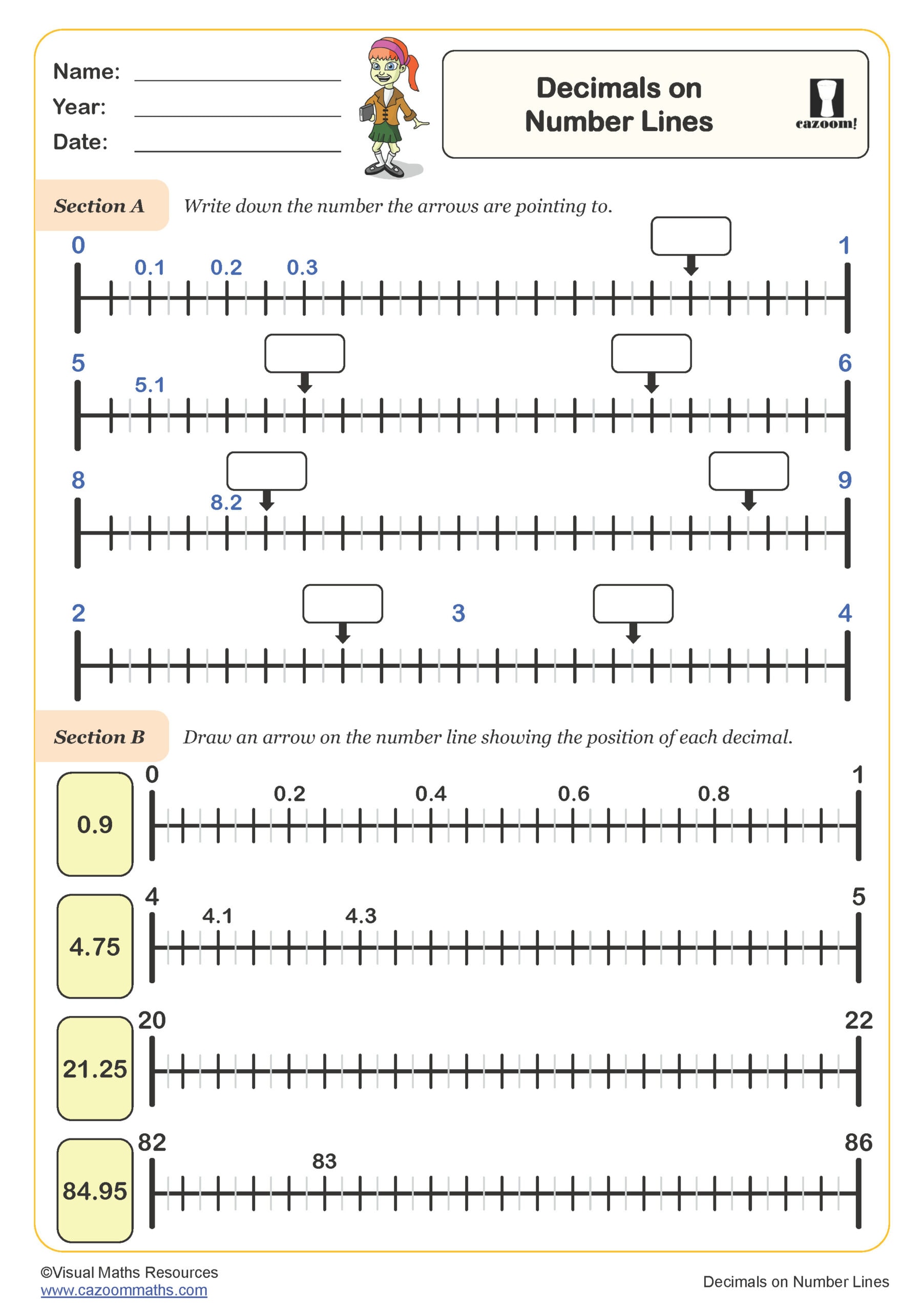
Fractions on Number Lines (A)
Year groups: 5, 6
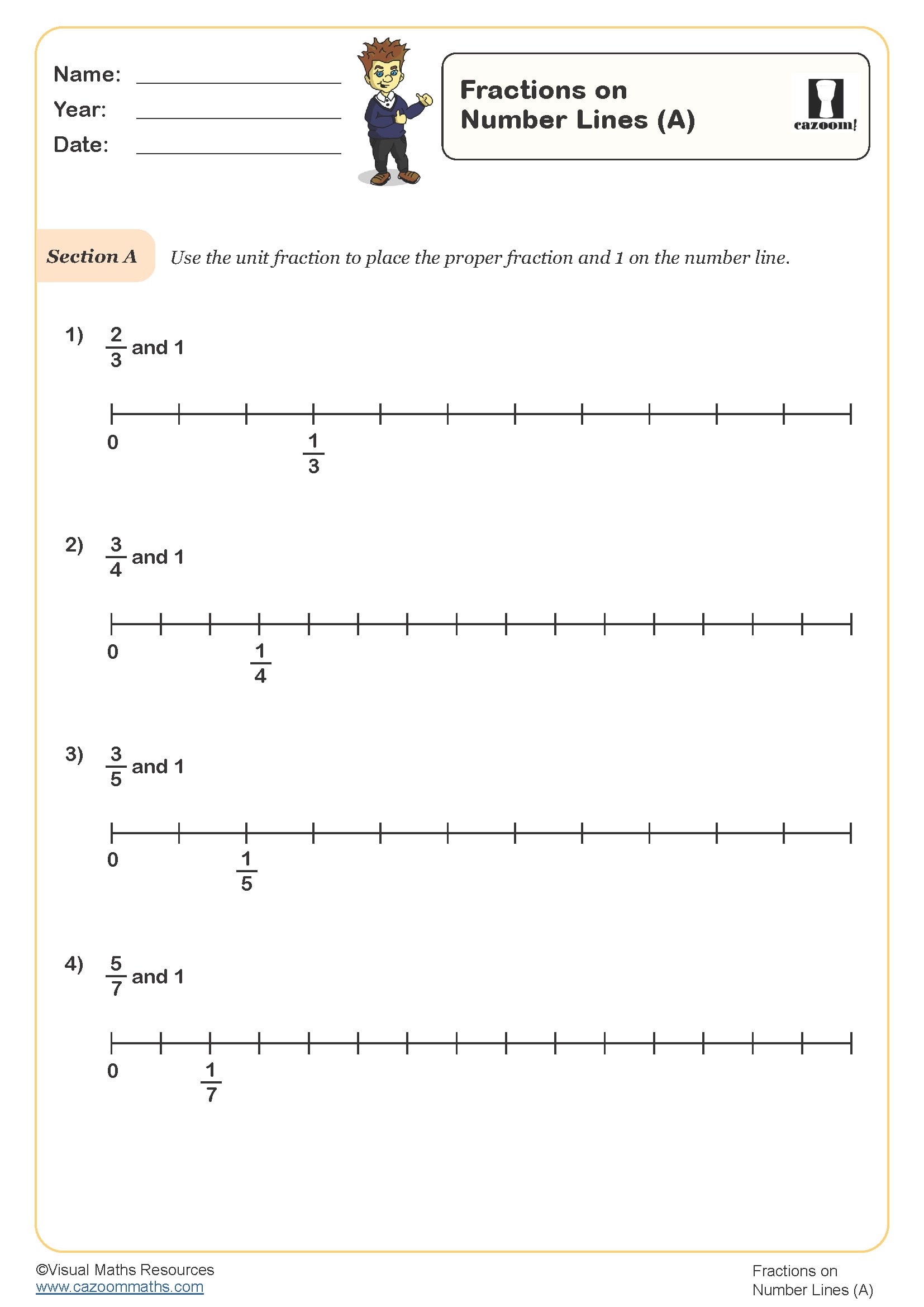
Making One
Year groups: 5
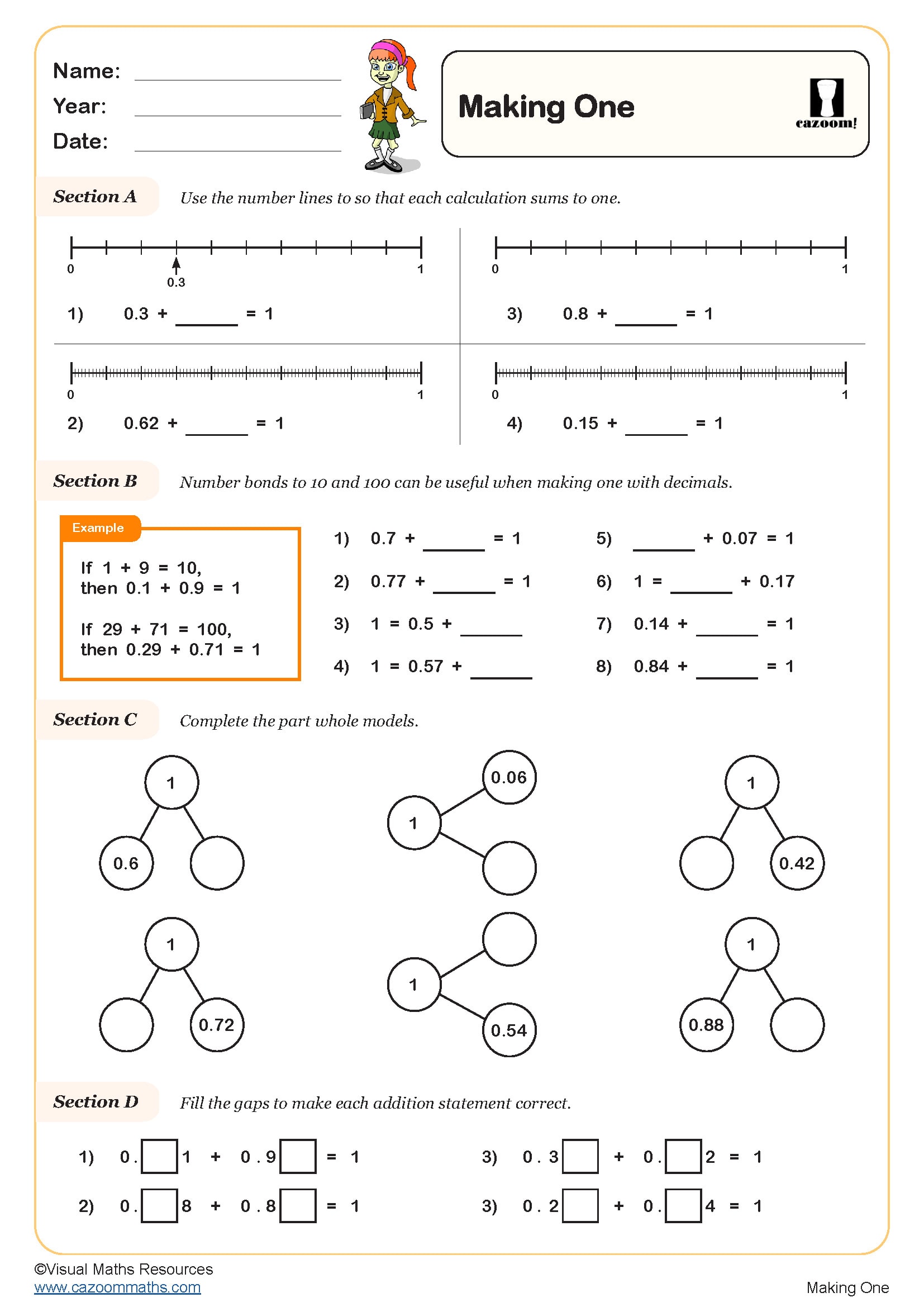
Calculations Crossing Zero (A)
Year groups: 6
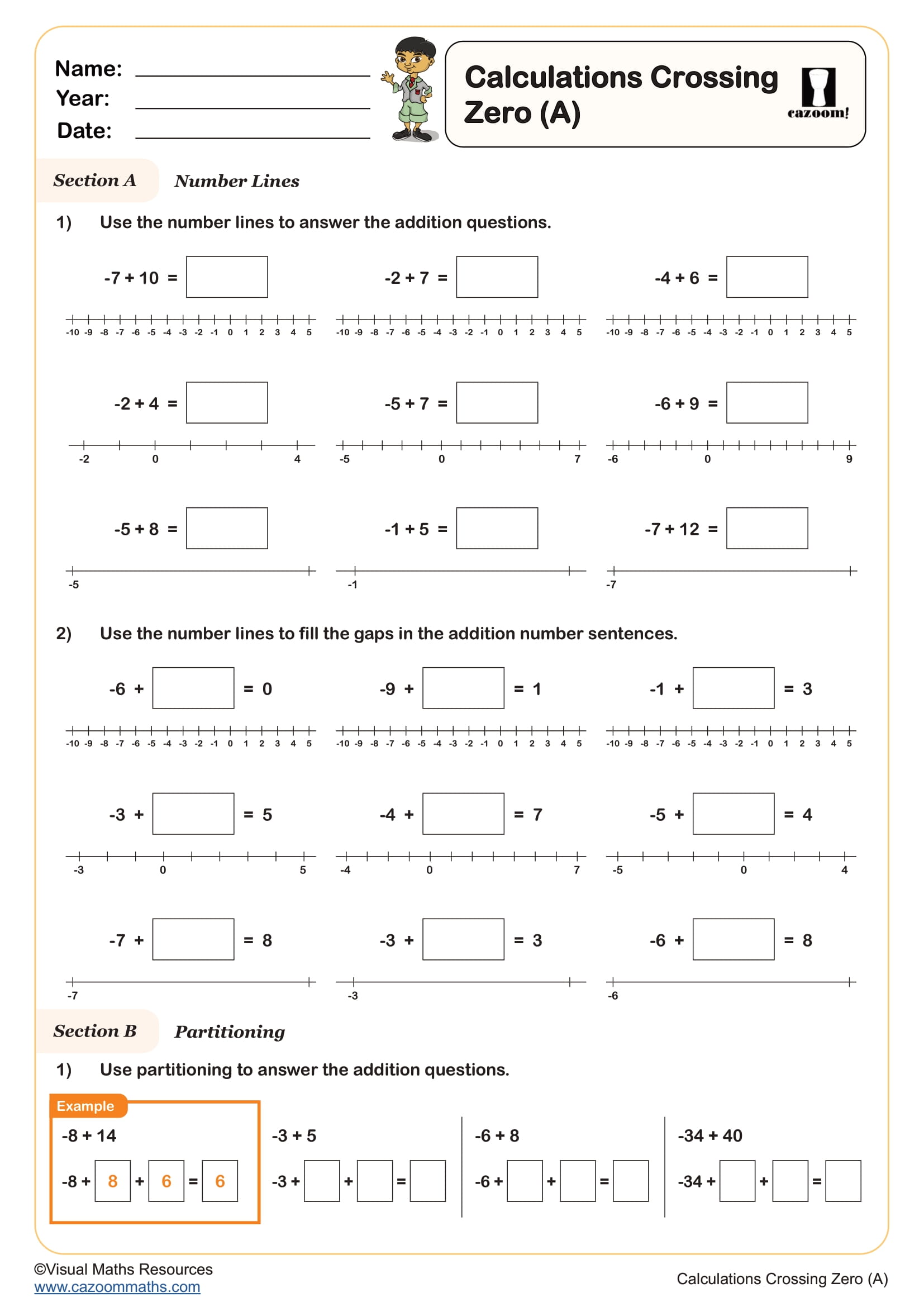
Calculations Crossing Zero (B)
Year groups: 6
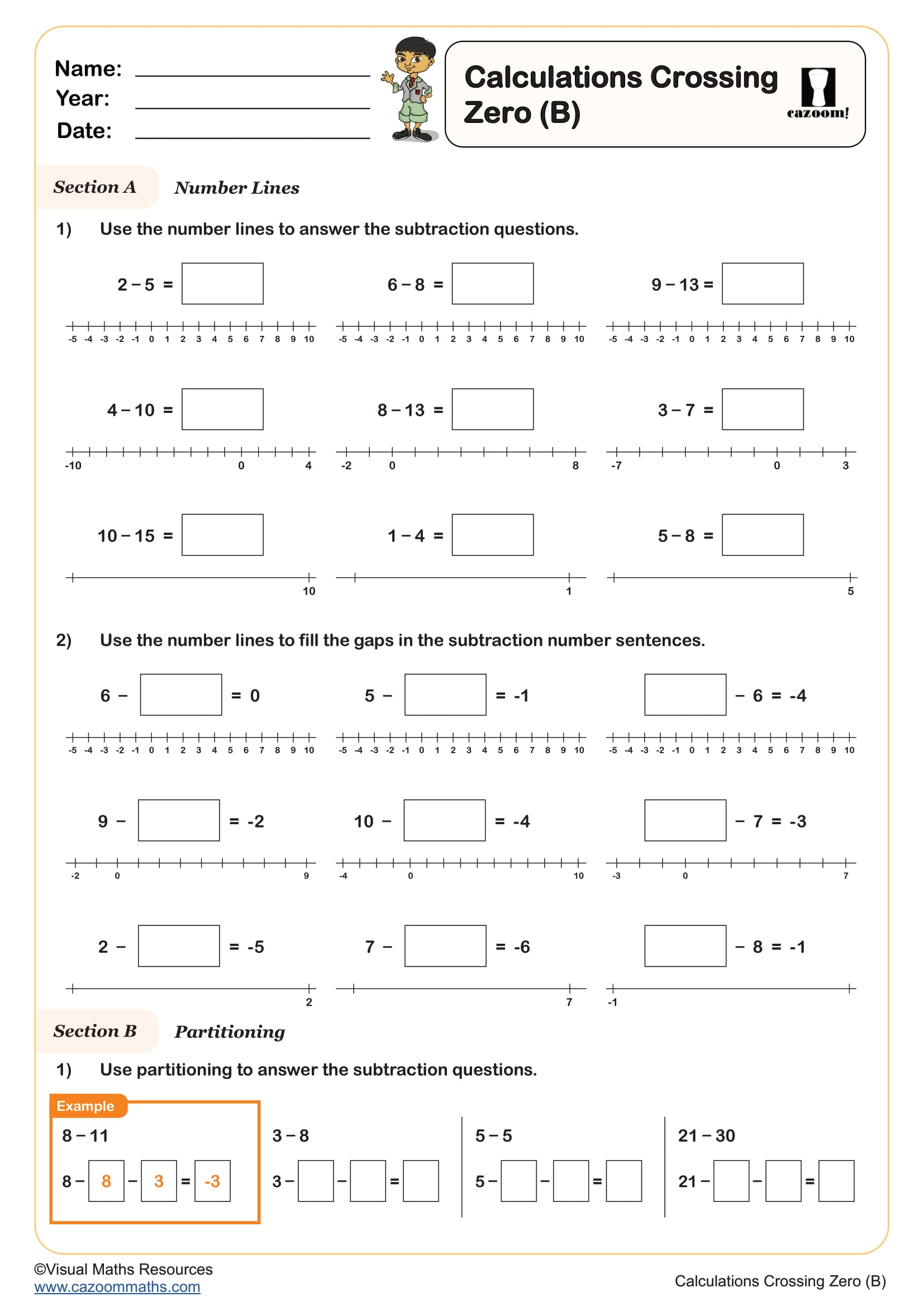
Calculations Crossing Zero (C)
Year groups: 6
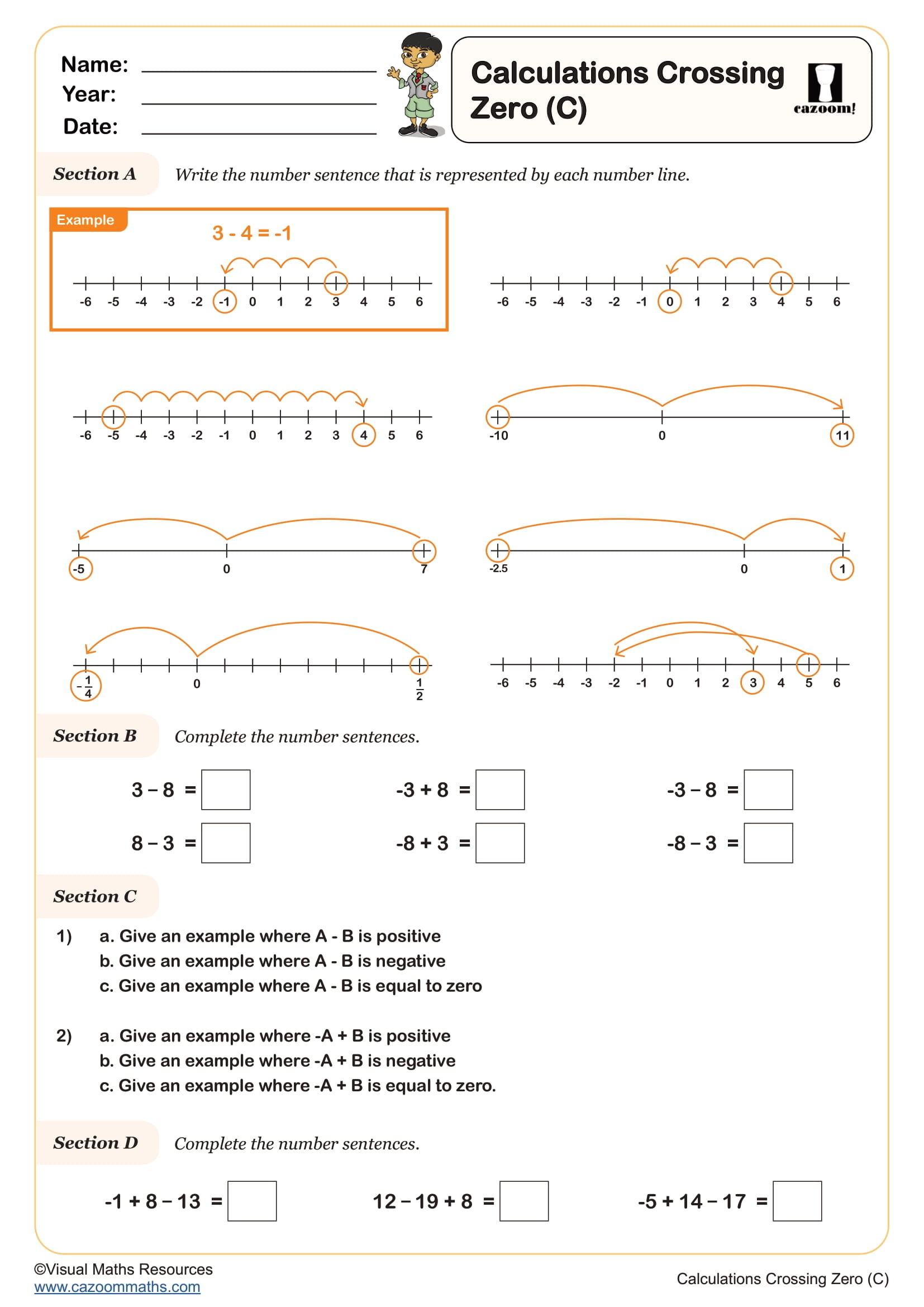
Fractions on Number Lines (B)
Year groups: 6
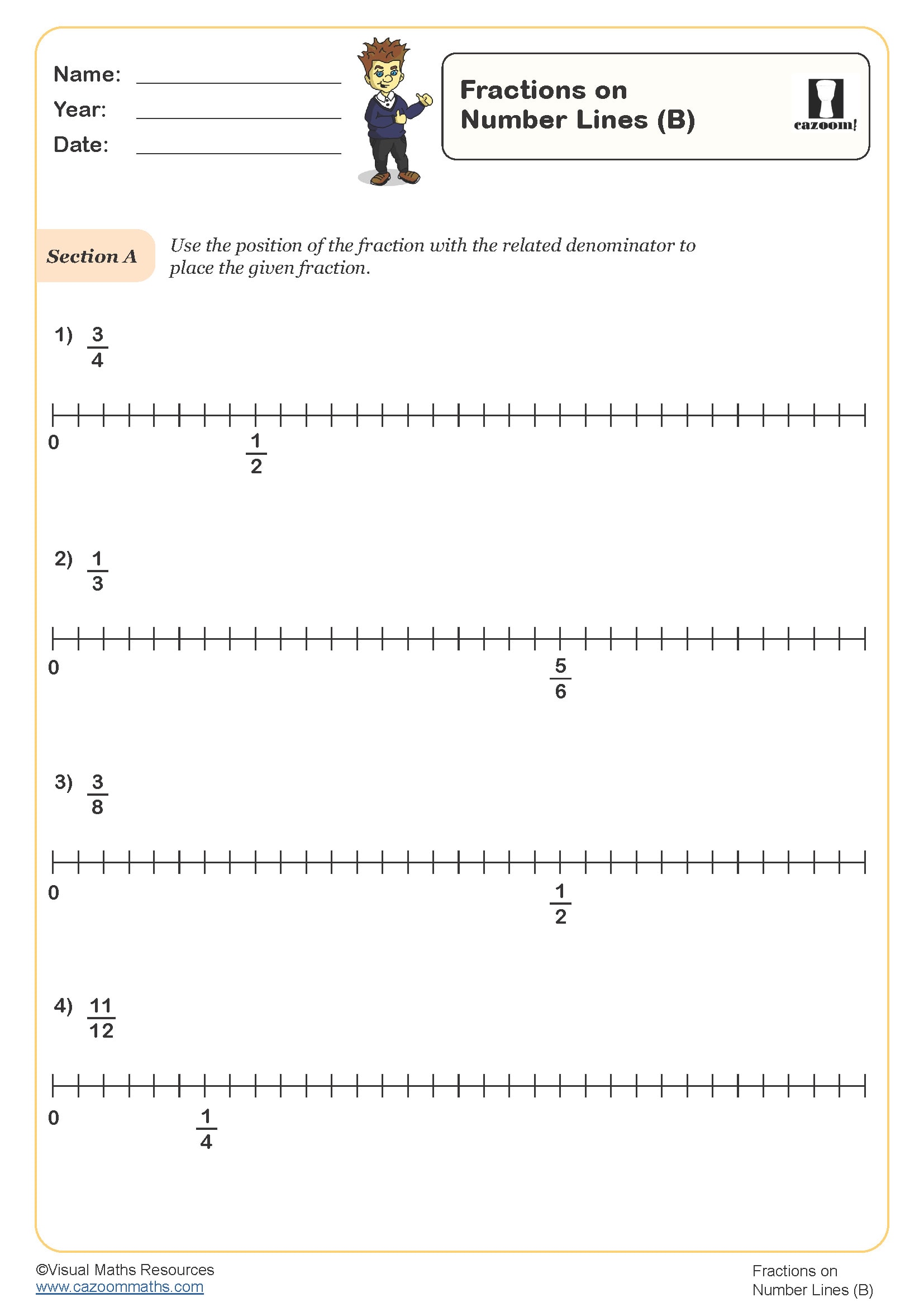
Labelling a Number Line with Mixed Numbers
Year groups: 6
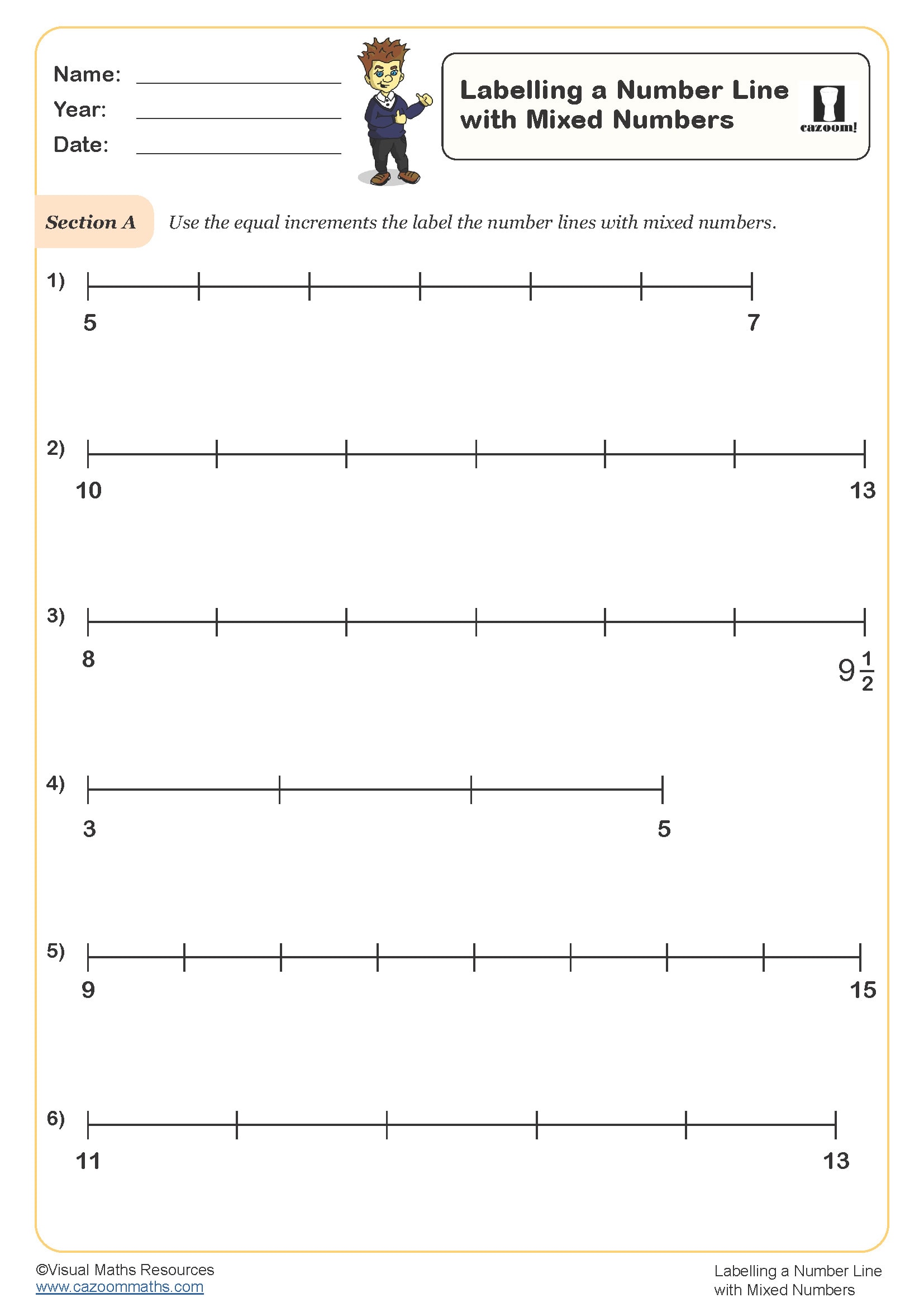
Printable PDF number lines Worksheets with Answers
Discover the versatility of number lines! Our Number Line Worksheets provide a visual, step-by-step approach to mastering essential mathematical concepts. From basic counting and addition to fractions, decimals, and negative numbers, these easy-to-download PDF worksheets make learning maths engaging and accessible. Answers are included to support independent learning. Help your students build confidence and a deep understanding of maths with our Number Line Worksheets!
What are number lines?
Number lines are visual tools that represent numbers along a straight line, with equal spacing between values. They can show positive and negative numbers, fractions, decimals, or whole numbers, depending on the concept being taught. Number lines help learners understand relationships between numbers, perform operations like addition and subtraction, and visualise sequences. For instance, moving right on a number line represents addition, while moving left represents subtraction.
Importance of number lines
Number lines are indispensable in maths education because they:
• Provide a clear visual representation of numerical relationships.
• Help learners grasp operations like addition, subtraction, and division.
• Support understanding of concepts such as fractions, decimals, and negative numbers.
• Encourage logical thinking by illustrating sequences and patterns.
• Foster a hands-on, interactive approach to problem-solving.
For example, using a number line to solve 5−35−35−3 involves simply moving three steps to the left from 5, making subtraction intuitive and visual.
Applications of number lines in Real Life
Number lines are not just for the classroom—they have practical applications in everyday life:
• Budgeting: Use number lines to track spending and plan savings goals.
• Time Management: Visualise timelines or project deadlines effectively.
• Measurements: Understand and compare lengths, weights, or volumes using fraction or decimal number lines.
• Problem Solving: Break down complex problems into manageable steps with visual aids.
• Real-Life Applications: Estimate distances, temperatures, or other numerical data in everyday scenarios.